Forums
- Forums
- Axis And Allies Forum
- General Discussion
- Aviation News
Aviation News
Post a reply
- Go to Previous topic
- Go to Next topic
- Go to Welcome
- Go to Introduce Yourself
- Go to General Discussion
- Go to Screenshots, Images and Videos
- Go to Off topic
- Go to Works in Progress
- Go to Skinning Tips / Tutorials
- Go to Skin Requests
- Go to IJAAF Library
- Go to Luftwaffe Library
- Go to RAF Library
- Go to USAAF / USN Library
- Go to Misc Library
- Go to The Ops Room
- Go to Made in Germany
- Go to Campaigns and Missions
- Go to Works in Progress
- Go to Juri's Air-Raid Shelter
- Go to Campaigns and Missions
- Go to Works in Progress
- Go to Skinpacks
- Go to External Projects Discussion
- Go to Books & Resources
-
 Main AdminWRIGHT-PATTERSON AIR FORCE BASE, Ohio (AFNS) -- The KC-46A Pegasus connected in flight with an F-16 Fighting Falcon and a C-17 Globemaster III July 8 and July 12, respectively, as part of a testing milestone.
Main AdminWRIGHT-PATTERSON AIR FORCE BASE, Ohio (AFNS) -- The KC-46A Pegasus connected in flight with an F-16 Fighting Falcon and a C-17 Globemaster III July 8 and July 12, respectively, as part of a testing milestone.
These tests with the F-16 and C-17 were in support of the Milestone C requirements to rendezvous, contact and transfer fuel to several receiver aircraft types.
An initial attempt with the F-16 earlier this year was successful; however, higher than expected axial loads on the boom were detected. These loads were again present during the initial attempt with the C-17 and necessitated installation of hydraulic pressure relief valves in the boom.
The recent successful tests show the boom axial loads hardware fix, designed by Boeing engineers, is performing as expected to alleviate the loads.
"I'm encouraged by these results,? Air Force Secretary Deborah Lee James said. ?The KC-46 program continues to move forward, making important progress that will get this vital capability into the hands of the warfighter.?
The final Milestone C flight test is to transfer fuel through the fixed boom to an A-10 Thunderbolt II. That test is also slated to occur in July.
"Once complete with the A-10, we will request approval from Mr. Frank Kendall, undersecretary of defense for acquisition, technology and logistics, to award production Lots 1 and 2, totaling 19 KC-46A aircraft," said Darlene Costello, the principal deputy assistant secretary of the Air Force for acquisition.
Air Force Chief of Staff Gen. David L. Goldfein added, "While it took some time, this week's results confirm my confidence the Boeing team will get this figured out. It's reassuring to see the program take this important step toward the production decision in August.?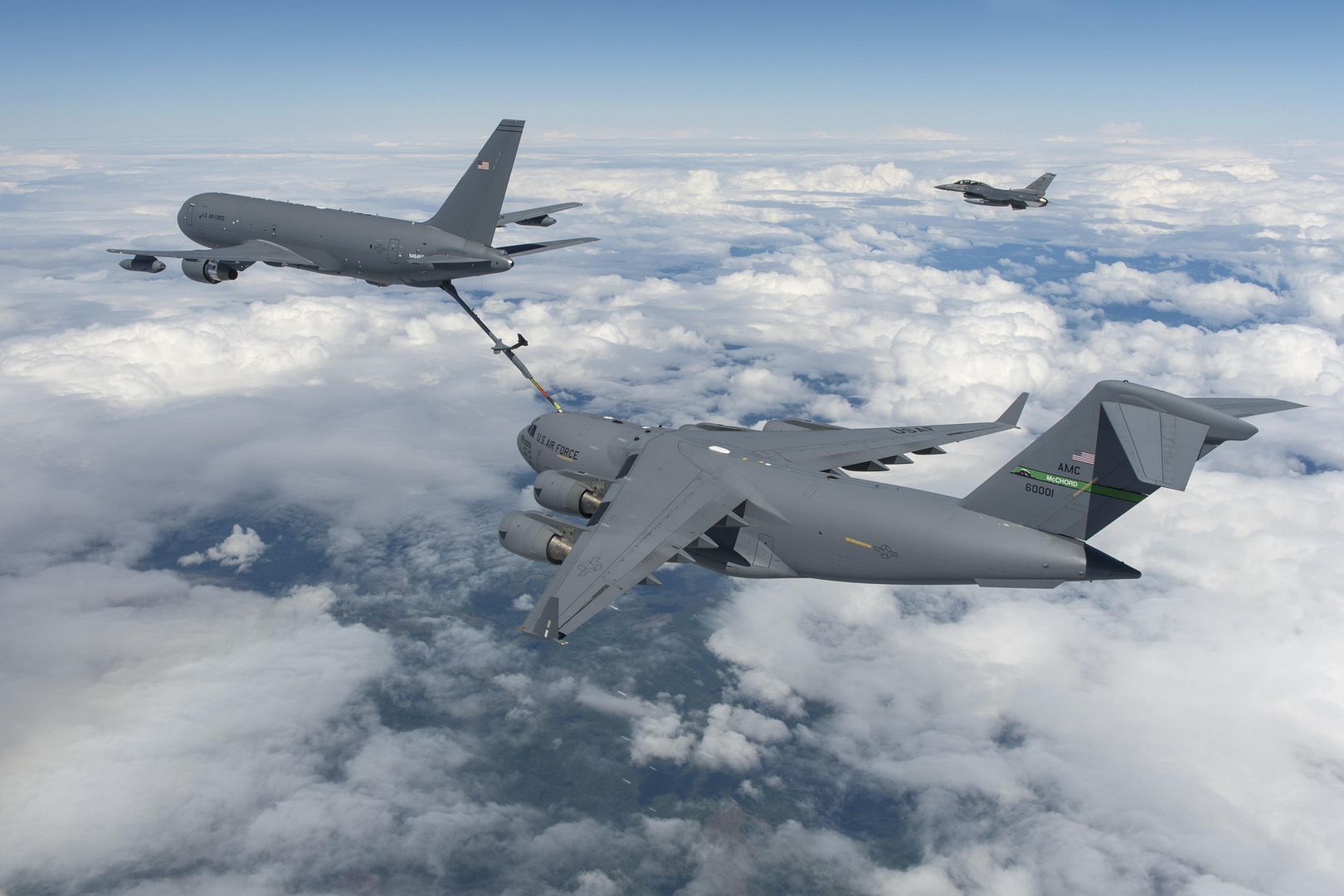
An EA-18G Growler takes off for a training mission as part of Red Flag 16-3 while the moon shines in the background at Nellis Air Force Base, Nevada, July 11, 2016. Red Flag 16-3 is focusing on integrating air, space and cyberspace. (U.S. Air Force photo/Tech Sgt. David Salanitri)
A KC-135 Stratotanker prepares to land at Nellis Air Force Base, Nevada July 11, 2016 day one of Red Flag. Red Flag 16-3 is one of four Red Flag exercises at Nellis--this edition focusing on integration of air, space and cyberspace. (U.S. Air Force photo/Tech. Sgt. David Salanitri)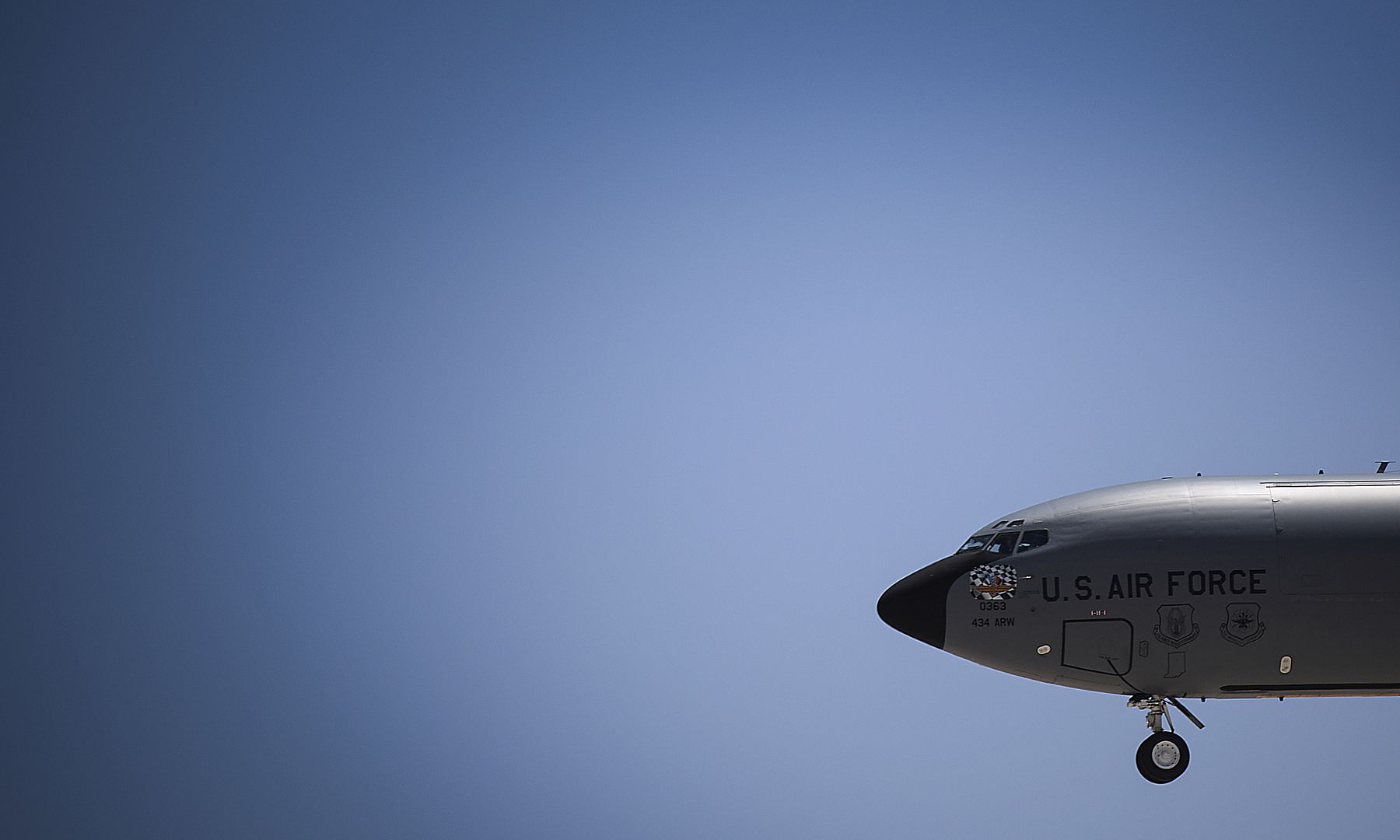
PACIFIC OCEAN (July 11, 2016) An MH-53E Sea Dragon attached to Mine Countermeasures Squadron (HM) 14 flies above the Pacific Ocean during the Southern California portion of the Rim of the Pacific 2016. Twenty-six nations, more than 40 ships and submarines, more than 200 aircraft and 25,000 personnel are participating in RIMPAC from June 30 to Aug. 4, in and around the Hawaiian Islands and Southern California. The world's largest international maritime exercise, RIMPAC provides a unique training opportunity that helps participants foster and sustain the cooperative relationships that are critical to ensuring the safety of sea lanes and security on the world's oceans. RIMPAC 2016 is the 25th exercise in the series that began in 1971. (U.S. Navy photo by Mass Communication Specialist 2nd Class Stacy M. Atkins Ricks/Released)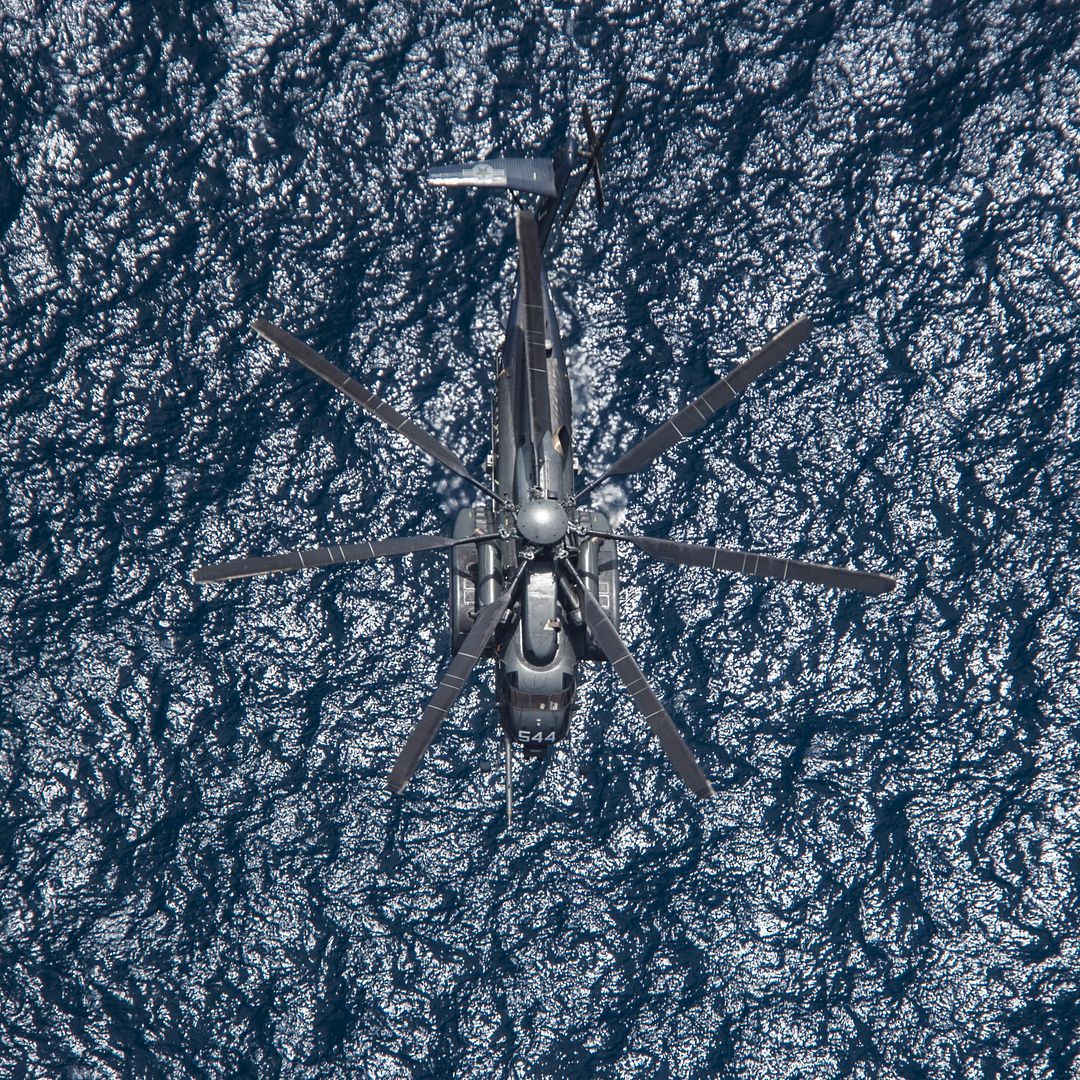
FARNBOROUGH, United Kingdom, July 13, 2016 /PRNewswire/ -- Boeing (NYSE: BA) and Ruili Airlines announced today at the 2016 Farnborough International Airshow the finalization of an order for six 787-9 Dreamliners, valued at $1.59 billion at current list prices. The order represents the first widebody order for the Yunnan-based carrier.
Ruili Airlines first announced an intent to order the six 787-9 Dreamliners in May at the ceremony for the airline's two-year anniversary.
"With our base in Yunnan province, Ruili Airlines is positioned to help build Yunnan as the gateway between Southwest China and the rest of the world," said Ma Zhanwei, Chairman, Ruili Airlines. "The right size, long range, competitive fuel efficiency, as well as passenger appealing edge of the 787-9 make it an ideal fit in facilitating our international expansion plans."
Established in February 2014, Ruili operates a fleet of nine 737 airplanes on 16 domestic routes with 46 daily departures. The start-up carrier plans to expand its fleet to 70 airplanes by the end of 2025.
"We are honored to expand our partnership with Ruili Airlines," said Boeing Commercial Airplanes President and CEO Ray Conner. "The 787-9 would complement Ruili Airlines' narrowbody fleet and enable them to operate long-haul services to destinations as far as America and Europe, while providing the latest and most advanced technology in passenger comfort."
The 787-9 complements and extends the 787 family. With the fuselage stretched by 20 feet (6 meters) over the 787-8, the 787-9 will fly over 40 more passengers an additional 280 nautical miles (520 kilometers) with the same exceptional environmental performance ? 20 percent less fuel use and 20 percent fewer emissions than the airplanes it replaces.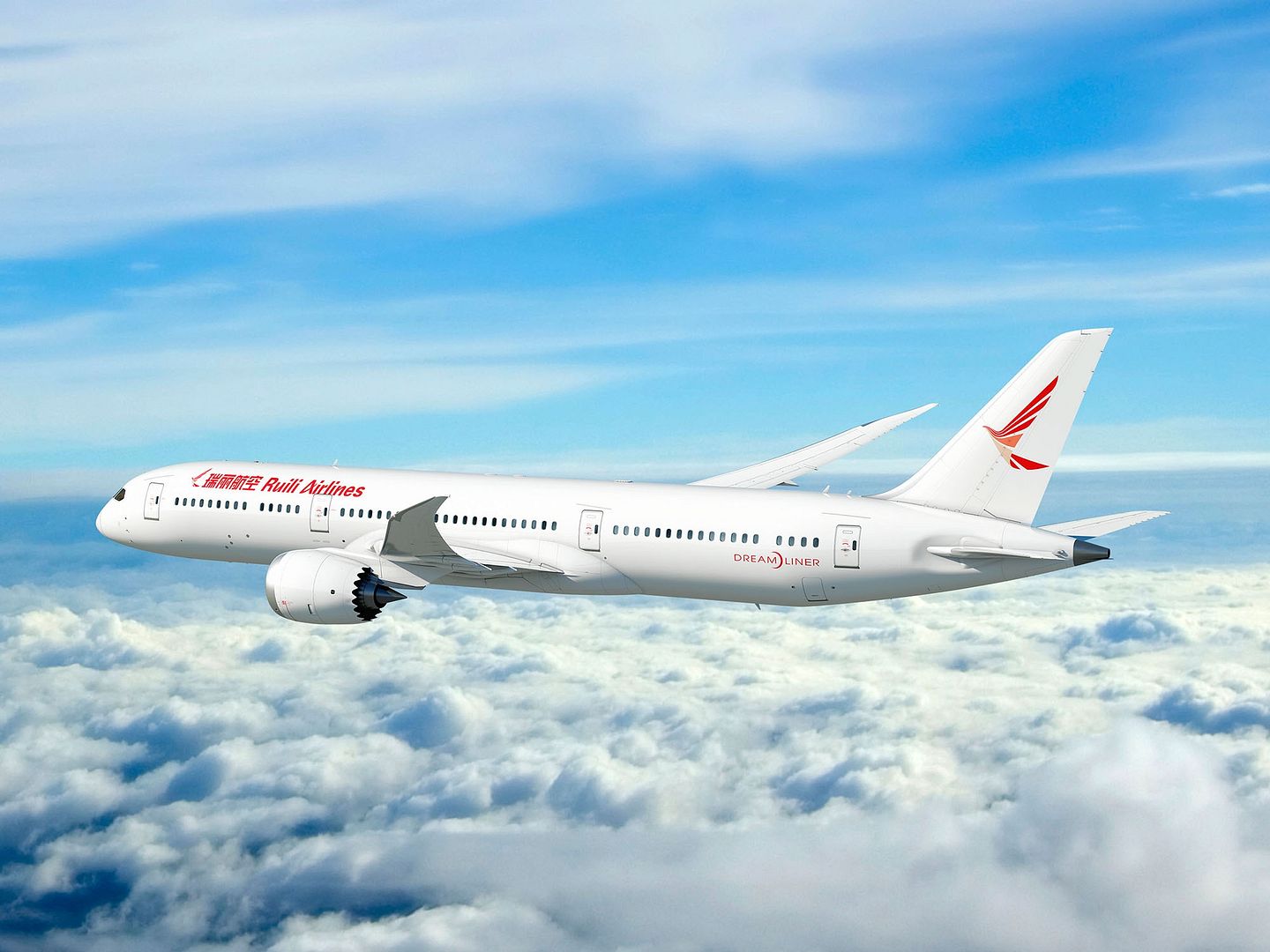
FARNBOROUGH, United Kingdom, July 13, 2016 /PRNewswire/ -- Boeing [NYSE: BA] and Air Europa today announced an order for 20 737 MAX 8s at the 2016 Farnborough International Airshow. The order was previously attributed to an unidentified customer on Boeing's Orders & Deliveries website.
"The 737 MAX will complement Air Europa's growing fleet and is the perfect aircraft for our short-haul operations across Europe to feed our long-haul network from hubs in Madrid and Palma," said Juan Jos? Hidalgo, president, Globalia, the parent company of Air Europa. "This aircraft will play a major role in growing our business in the years to come and we look forward to becoming an all-Boeing carrier following recent orders for the 787 Dreamliner and 737 MAX."
The 737 MAX incorporates the latest technology CFM International LEAP-1B engines, Advanced Technology winglets and other improvements to deliver the highest efficiency, reliability and passenger comfort in the single-aisle market. The 737 MAX will be 14 percent more fuel-efficient than today's most efficient Next-Generation 737s ? and 20 percent better than the original Next-Generation 737s when they first entered service.
"We are honoured that Air Europa continues to place its faith in our products and services with this new order for the 737 MAX," said Monty Oliver, vice president, European Sales, Boeing Commercial Airplanes. "This airplane will be a great addition to its fleet and we could not be more pleased that one of our greatest airline partners moves towards becoming an all-Boeing carrier."
Air Europa announced an order for 14 787-9 Dreamliners in 2015, the largest ever Boeing widebody order from a Spanish carrier. Air Europa now has a combined total of 22 787-8s and 787-9s on order as it continues its transition to an all-Boeing long-haul fleet.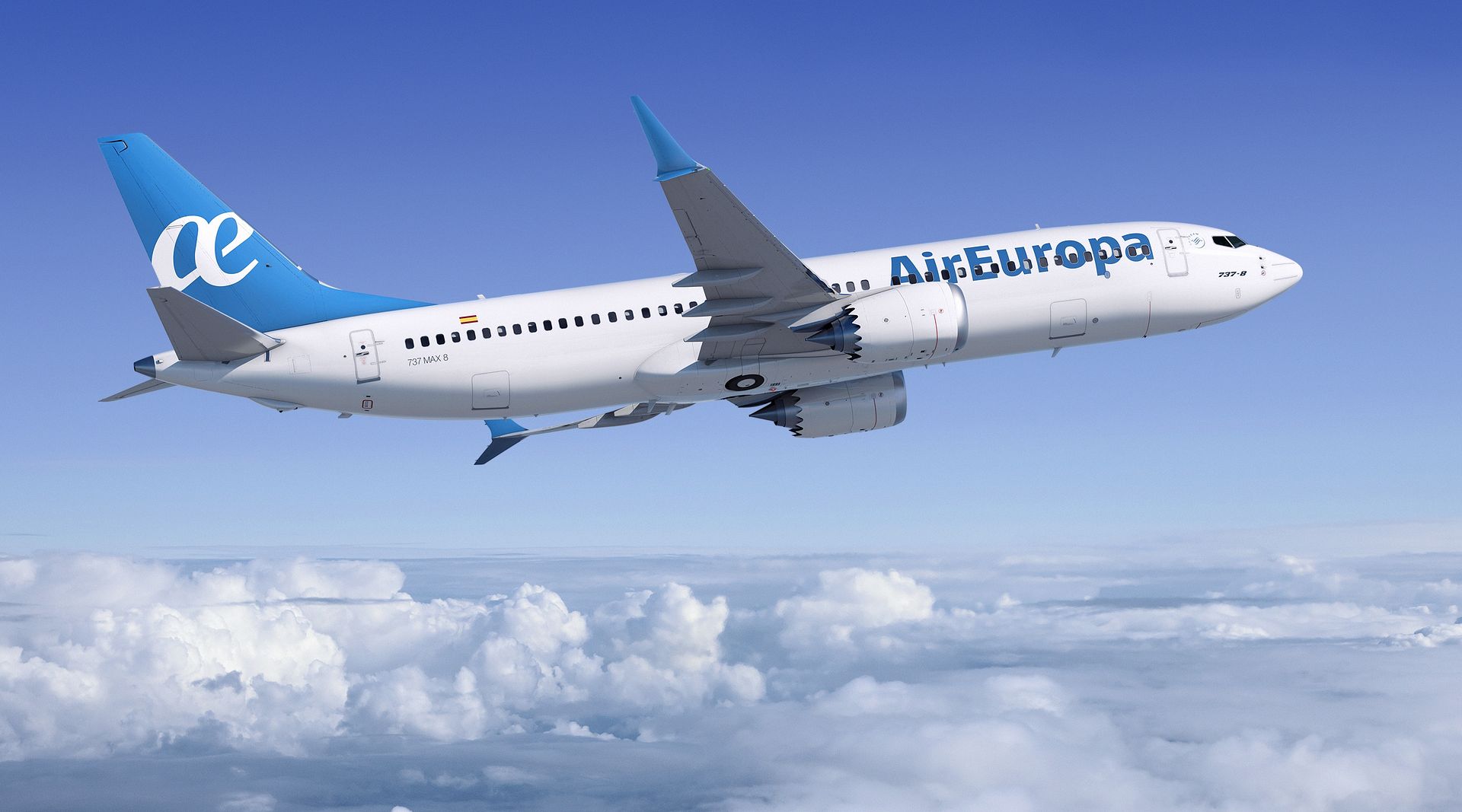
-
 Main AdminPACIFIC OCEAN (July 13, 2016) - An F/A-18E Super Hornet assigned to the Warhawks of Strike Fighter Squadron (VFA) 97 performs a touch-and-go maneuver on USS John C. Stennis' (CVN 74) flight deck during Rim of the Pacific. Twenty-six nations, more than 40 ships and submarines, more than 200 aircraft and 25,000 personnel are participating in RIMPAC from June 30 to Aug. 4, in and around the Hawaiian Islands and Southern California. The world?s largest international maritime exercise, RIMPAC provides a unique training opportunity that helps participants foster and sustain the cooperative relationships that are critical to ensuring the safety of sea lanes and security on the world's oceans. RIMPAC 2016 is the 25th exercise in the series that began in 1971. (U.S. Navy photo by Mass Communication Specialist 3rd Class Andre T. Richard/ Released)
Main AdminPACIFIC OCEAN (July 13, 2016) - An F/A-18E Super Hornet assigned to the Warhawks of Strike Fighter Squadron (VFA) 97 performs a touch-and-go maneuver on USS John C. Stennis' (CVN 74) flight deck during Rim of the Pacific. Twenty-six nations, more than 40 ships and submarines, more than 200 aircraft and 25,000 personnel are participating in RIMPAC from June 30 to Aug. 4, in and around the Hawaiian Islands and Southern California. The world?s largest international maritime exercise, RIMPAC provides a unique training opportunity that helps participants foster and sustain the cooperative relationships that are critical to ensuring the safety of sea lanes and security on the world's oceans. RIMPAC 2016 is the 25th exercise in the series that began in 1971. (U.S. Navy photo by Mass Communication Specialist 3rd Class Andre T. Richard/ Released)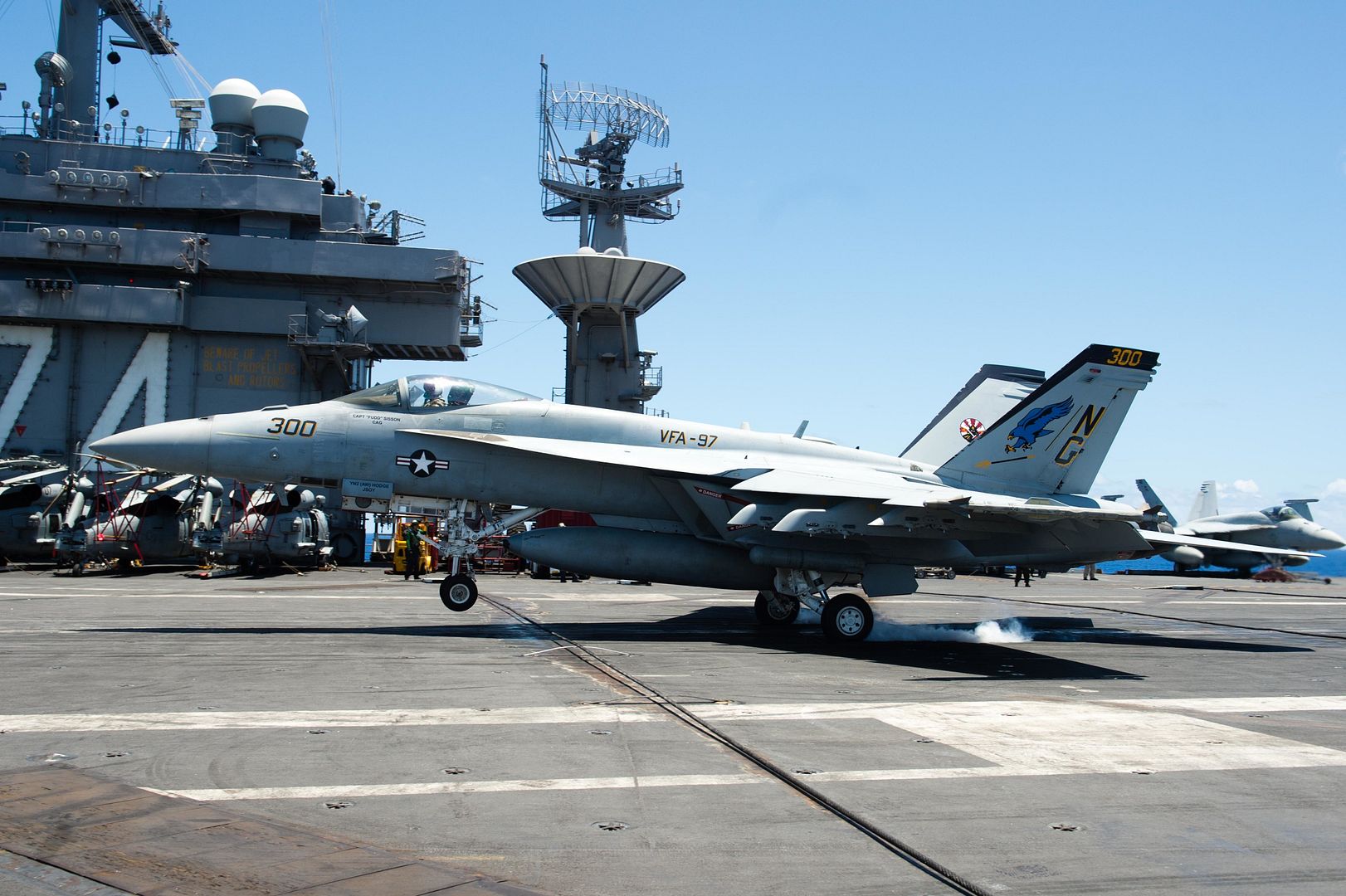
PACIFIC OCEAN (July 13, 2016) - An F/A-18E Super Hornet assigned to the Vigilantes of Strike Fighter Squadron (VFA) 151 lands aboard USS John C. Stennis' (CVN 74) flight deck during Rim of the Pacific. Twenty-six nations, more than 40 ships and submarines, more than 200 aircraft and 25,000 personnel are participating in RIMPAC from June 30 to Aug. 4, in and around the Hawaiian Islands and Southern California. The world?s largest international maritime exercise, RIMPAC provides a unique training opportunity that helps participants foster and sustain the cooperative relationships that are critical to ensuring the safety of sea lanes and security on the world's oceans. RIMPAC 2016 is the 25th exercise in the series that began in 1971. (U.S. Navy photo by Mass Communication Specialist 3rd Class Andre T. Richard/ Released)
Ford lsland, Hawaii (July13,2016) A Japan Maritime Self Defense Force SH-60K helicopter takes off during a mass casualty drill held on Ford Island during Rim of the Pacific 2016. Twenty-six nations, more than 40 ships and submarines, more than 200 aircraft and 25,000 personnel are participating in Rim of the Pacific exercise from June 30 to Aug. 4, in and around the Hawaiian Islands and Southern California. The world's largest international maritime exercise, RIMPAC provides a unique training opportunity that helps participants foster and sustain the cooperative relationships that are critical to ensuring the safety of sea lanes and security on the world's oceans. RIMPAC 2016 is the 25th exercise in the series that began in 1971. (Japan Maritime Self-Defense Force Photo by Satoru Honma /Released)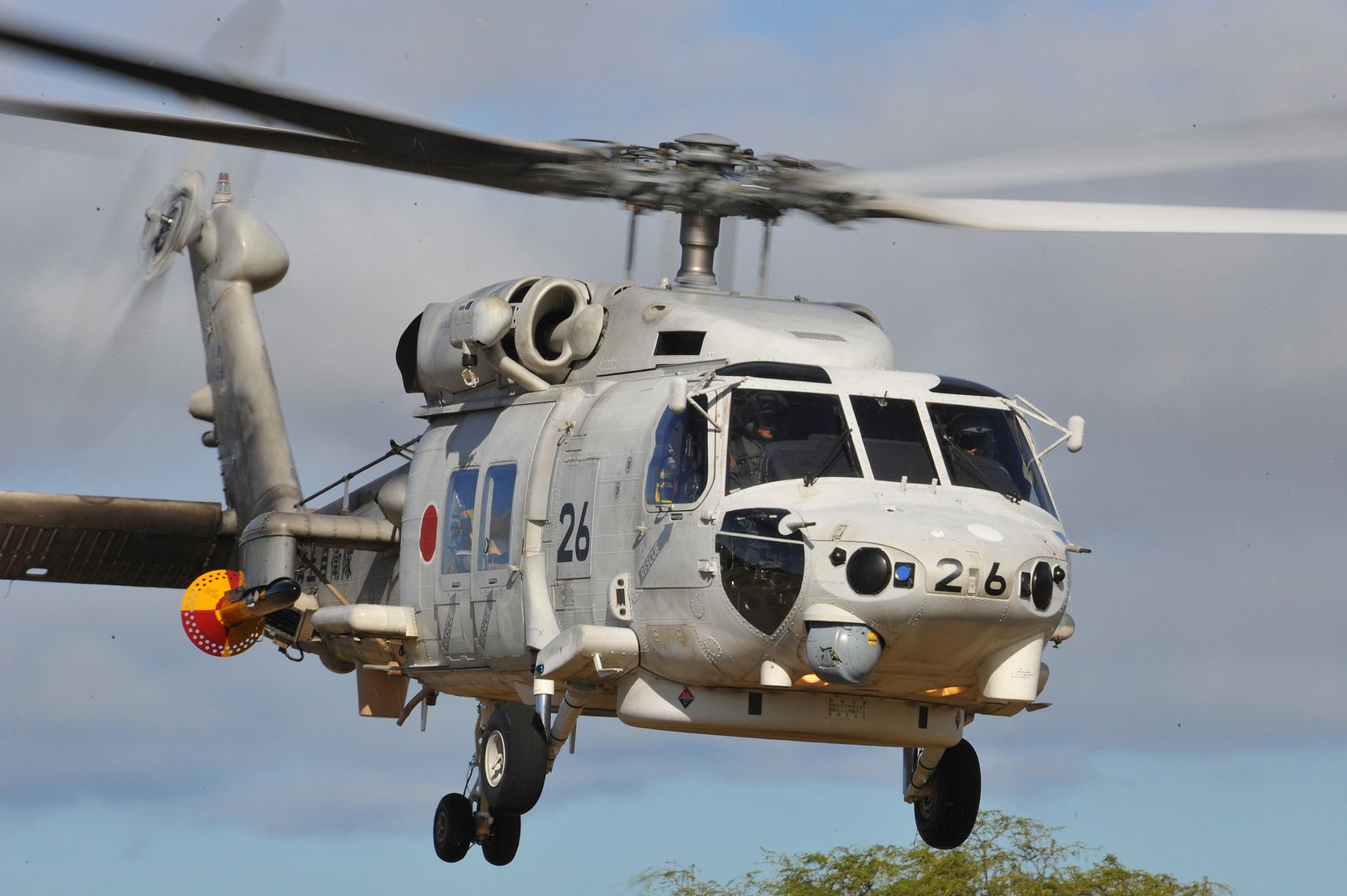
-
 Main Admin
Main Admin -
 Main AdminS?o Jos? dos Campos, Brazil, July 12, 2016 ? Embraer Executive Jets announced today that its Legacy 450 has received certification for an extended range of 2,904 nm (5,378 km). The improvement was approved by Brazil?s ANAC (Ag?ncia Nacional de Avia??o Civil), the FAA (U.S. Federal Aviation Administration) and EASA (European Aviation Safety Agency). The new range with four passengers onboard plus reserves is 329 nm (609 km) more than the current certified range.
Main AdminS?o Jos? dos Campos, Brazil, July 12, 2016 ? Embraer Executive Jets announced today that its Legacy 450 has received certification for an extended range of 2,904 nm (5,378 km). The improvement was approved by Brazil?s ANAC (Ag?ncia Nacional de Avia??o Civil), the FAA (U.S. Federal Aviation Administration) and EASA (European Aviation Safety Agency). The new range with four passengers onboard plus reserves is 329 nm (609 km) more than the current certified range.
?With this range that surpassed our original targets, the Legacy 450 is definitely the best-in-class business jet. The aircraft already offers better speed and field performance than originally planned, with the roomiest cabin in its category,? said Marco Tulio Pellegrini, President & CEO, Embraer Executive Jets. ?The new range, the longest in its class, will enable nonstop flights from San Francisco to Hawaii, New York to Los Angeles.?
The Legacy 450?s increased range was certified after minor modifications to the wing to accommodate more fuel, along with updates to the Fuel Control Unit (FCU) and avionics. The extra fuel tank capacity is retrofittable at no cost for the first aircraft serial numbers.
The first aircraft with the increased range will be delivered this month.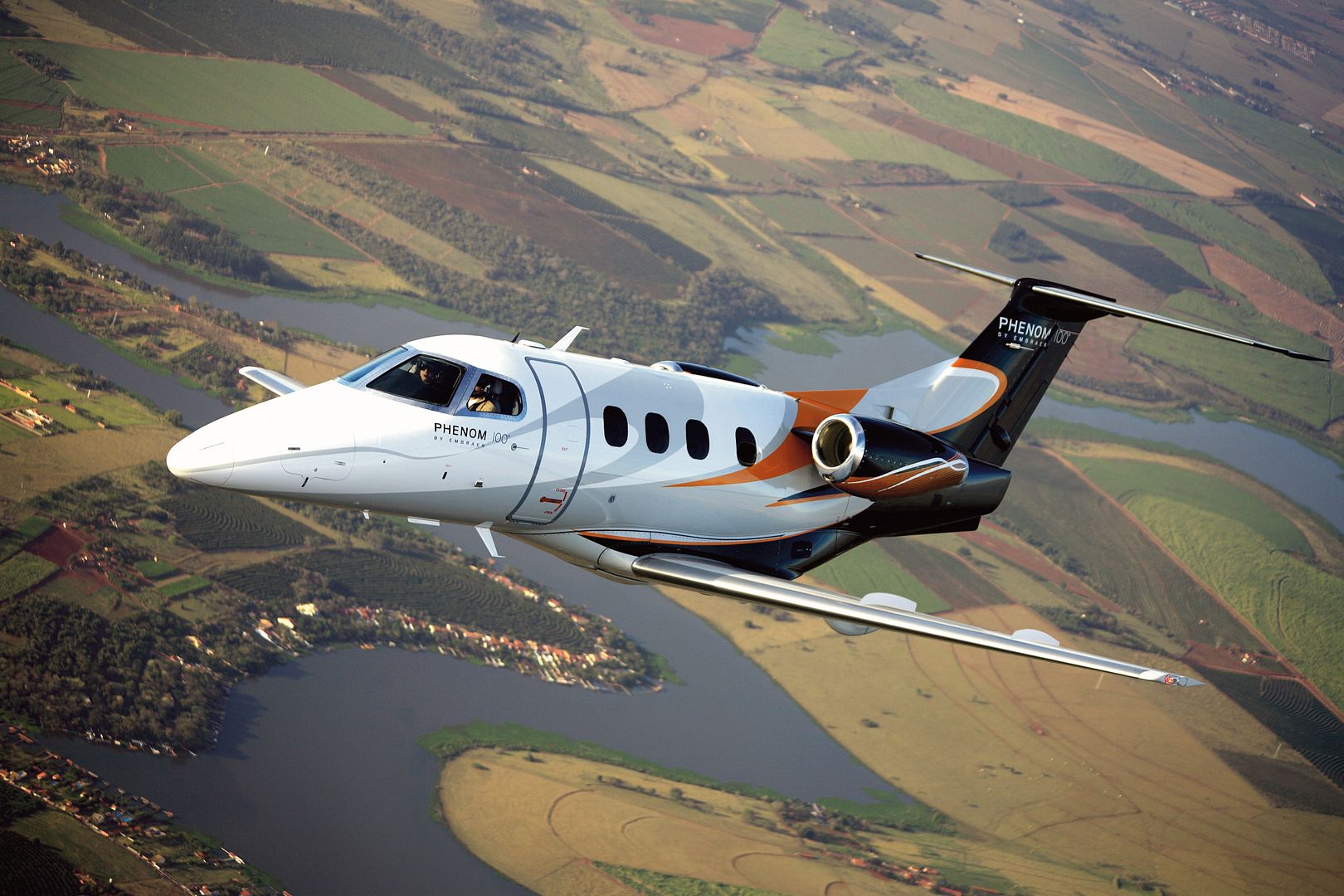
Osan Air Base, Republic of Korea -- An HH-60G Pave Hawk assigned to 33rd Rescue Squadron flies over Republic of Korea air space for Exercise Pacific Thunder 16-2, July 13, 2016. The 33rd RQS comes to Osan AB, ROK, for Pacific Thunder to train their combat search and rescue capabilities. (U.S. Air Force photo by Staff Sgt. Jonathan Steffen/Released)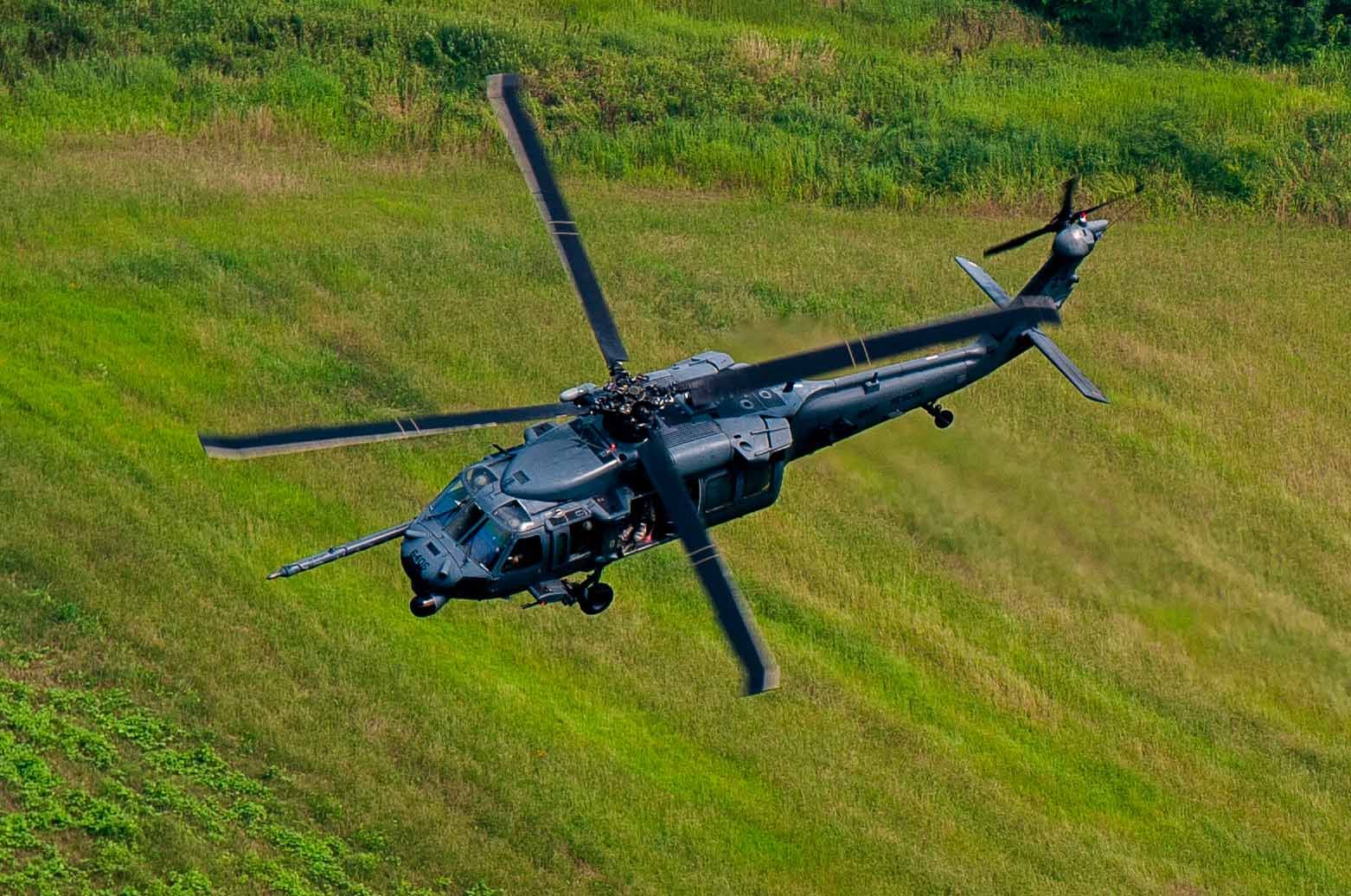
An F-16 Fighting Falcon, assigned to the 64th Aggressor Squadron, takes off during the first day of Red Flag 16-3 at Nellis Air Force Base, Nev., July 11, 2016. The 64th AGRS plays a critical role as the opposing force during Red Flag by providing combat air forces from around the world challenges to prepare for future conflicts of war. (U.S. Air Force photo by Airman 1st Class Kevin Tanenbaum)
An F-16 Fighting Falcon, assigned to the 64th Aggressor Squadron, takes off during the first day of Red Flag 16-3 at Nellis Air Force Base, Nev., July 11, 2016. Red Flag involves a variety of attack, fighter, bomber, reconnaissance, electronic warfare, air lift support, search and rescue aircraft. (U.S. Air Force photo by Airman 1st Class Kevin Tanenbaum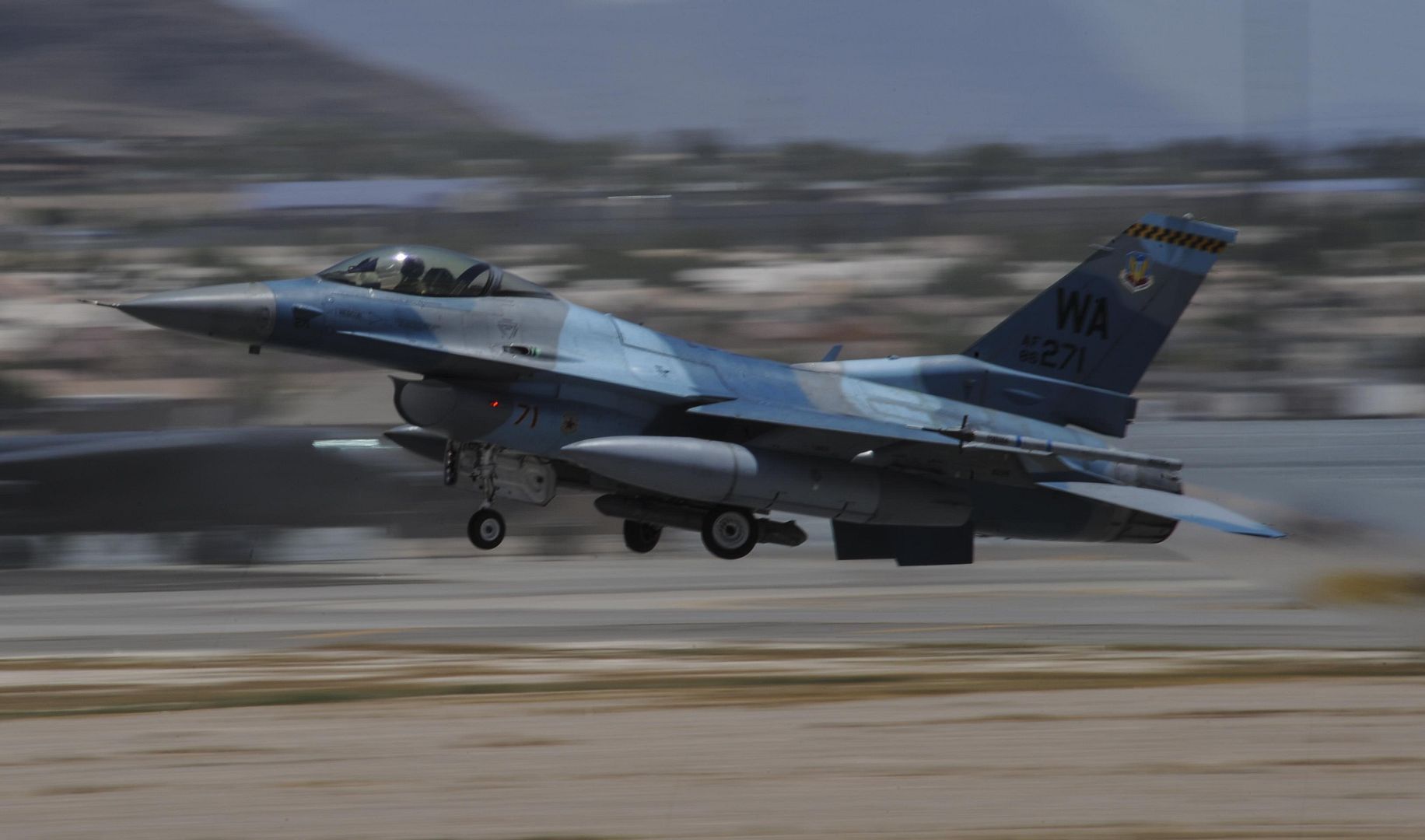
-
 Main AdminEDWARDS AIR FORCE BASE, Calif. --
Main AdminEDWARDS AIR FORCE BASE, Calif. --
Innovation is the introduction of something new, an improved product or method. One innovation that?s not necessarily new but continues to demonstrate innovation is the RASCAL pod program at the U.S. Air Force Test Pilot School here.
Conceived in 2006, The Reconfigurable Airborne Sensor, Communication and Laser - or RASCAL - pod provides a means of easily installing new instruments and technologies on board aircraft for flight testing.
According to Dan Carroll, program manager for the RASCAL pod, installing the test hardware in the pod, rather than into an aircraft, saves time and money.
?The pod has a tremendous impact on time,? Carroll said. ?With current cutting edge technology, flight test equipment needs to be integrated, calibrated, and tested at the sub-system level. This can take weeks or months. We can?t always afford to take an aircraft off the line that long.?
With the RASCAL pod, the integration and calibration is done in the laboratory, then the pod is mounted on an aircraft for the flight tests. Since the aircraft no longer needs to be modified, it is available for other missions.
The pods are also useful for more short-notice projects. One example he cited was a project addition proposed by a customer, the Strategic Capabilities Office (SCO), with just five weeks? notice before a scheduled flight test. ?There is no way to accomplish the approval, design and installation on an Air Force aircraft in that time frame,? Carroll said. ?With the pod, it was easily done.?
According to Carroll, DARPA, AFRL, defense contractors and other outside organizations request tests using the pods, or in many cases ask to buy a RASCAL pod.
In 2008 the pods? size tended to limit the range of tests, since the equipment has to fit in a relatively small space. But the advancement of technology and shrinking of components is increasing the number of projects that can be supported with the pod.
?As things get smaller, more projects are coming in,? Carroll said.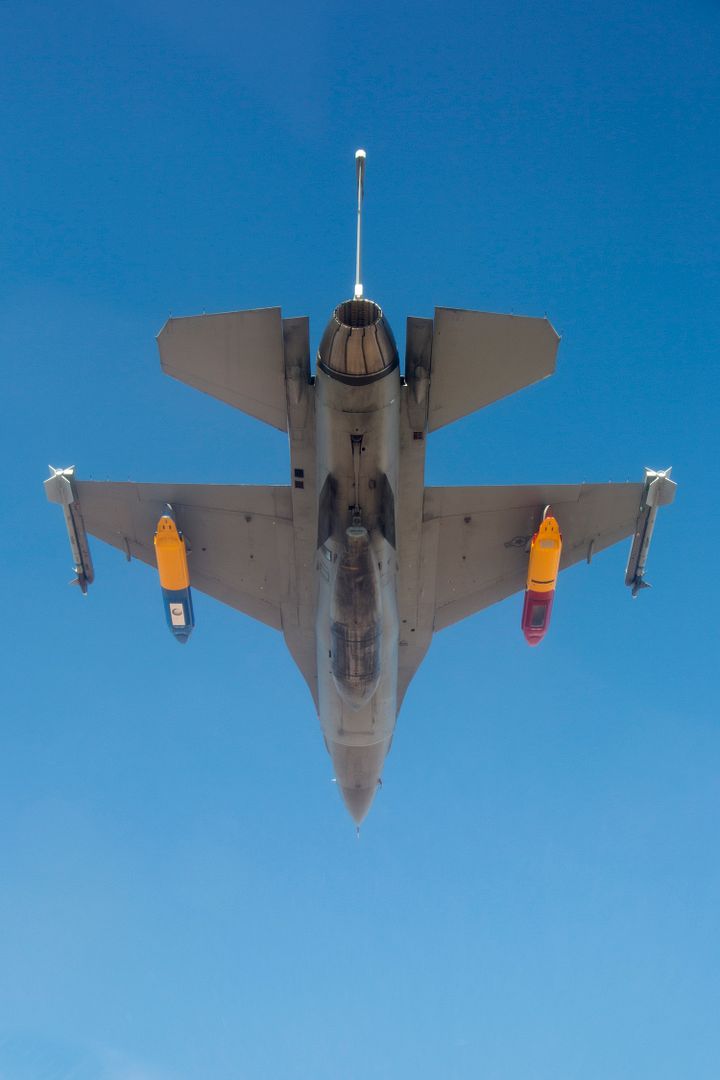
The pods are also evolving, getting upgrades and modifications to further increase their capabilities.
One of the current projects the pod is facilitating is the exploration of alternate navigation systems. Most electronic navigation systems rely on GPS. Should this, for any reason, become unavailable, then a backup system is always helpful. According to Carroll, this new method involves the aircraft looking at the stars overhead to help determine its position, much like sailors traditionally used a sextant, and simultaneously looking at the ground like Google Earth.
The pods ? there are currently three of them ? are built from the chassis of SUU-20 rocket launchers that were either damaged or modified and could not be returned to service in their original capacity. After intense engineering and mechanical metamorphosis, the RASCAL pod is created.
When the RASCAL pod was originally built, it was envisioned to fly on Edwards F-15s and T-38Bs also, but those aircraft have since left Edwards leaving the F-16 as the sole Air Force platform for the RASCAL pod currently. It has flown on non-Air Force jets, but this is generally expensive and has schedule issues.
They are currently approved to fly up to Mach 1.2 on F-16s and will be cleared to fly on the T-38Cs which get the centerline hard-point upgrade.
?This will increase our test capabilities, and ease the pressure on the F-16 fleet here,? Carroll said.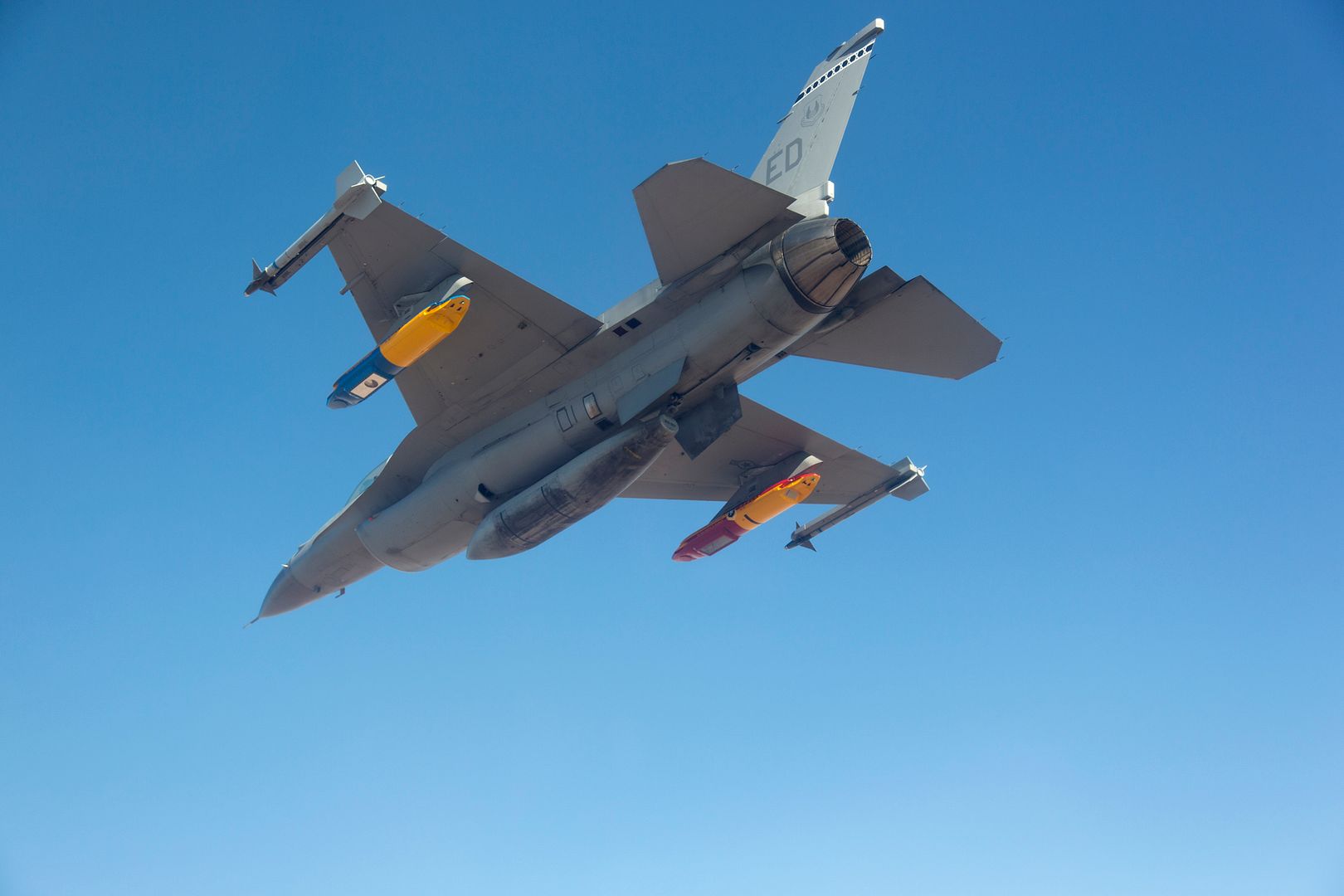
Maintainers assigned to Electronic Attack Squadron-209, EA-18G, NAS Whidbey Island, Washington, standby to recover and assist the aircrew of an EA-18G Growler after completion of a Red Flag 16-3 training sortie July 13, 2016 at Nellis AFB, Nev. A typical Red Flag exercise involves a variety of attack, fighter and bomber aircraft, reconnaissance aircraft, electronic warfare aircraft, air superiority aircraft, airlift support, search and rescue aircraft, aerial refueling aircraft, command and control aircraft, as well as ground based command and control, space, and cyber forces. (U.S. Air Force photo by Senior Airman Joshua Kleinholz/Released)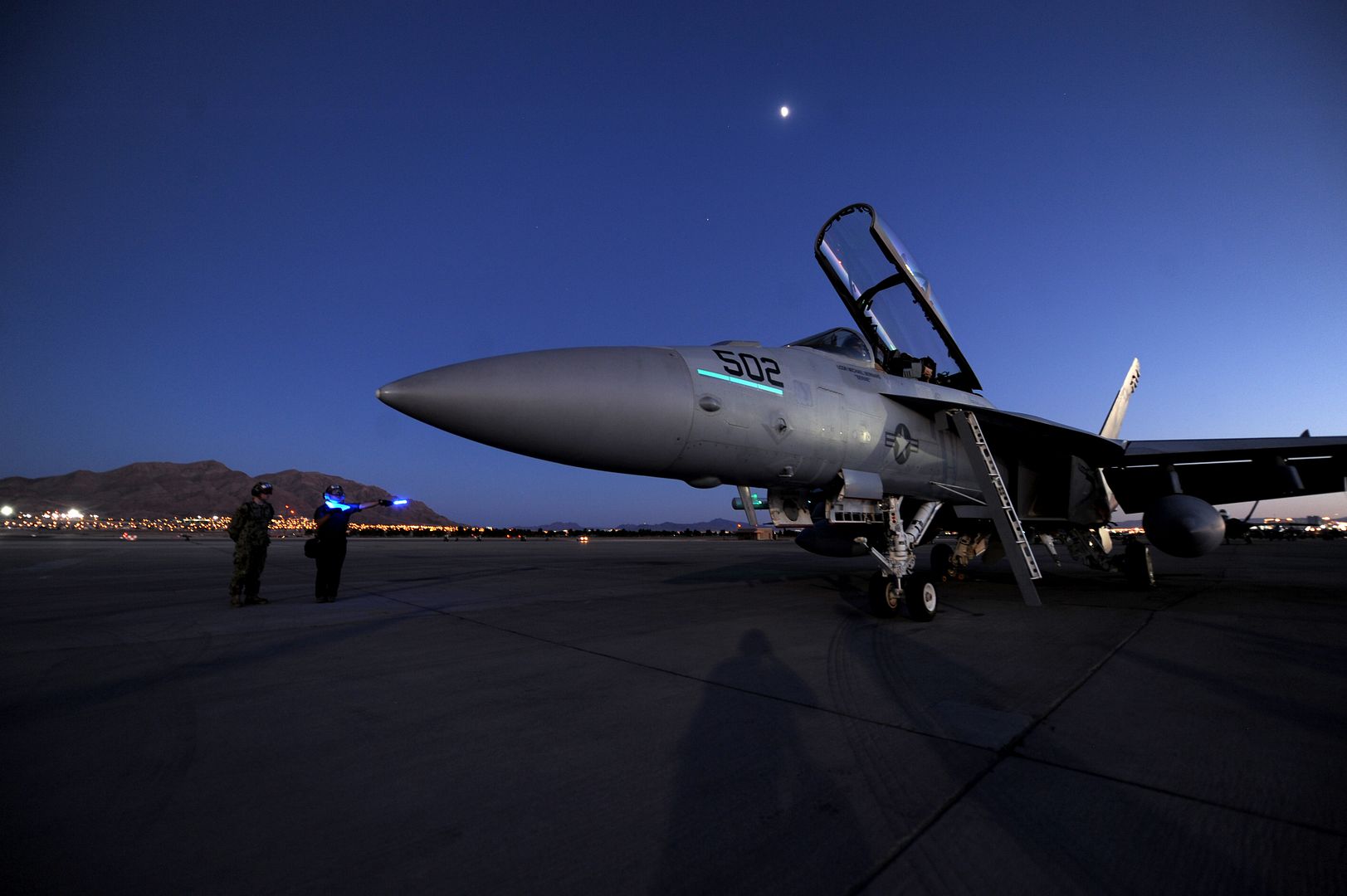
July 15, 2016 Montr?al Commercial Aircraft, Press Release
Bombardier Commercial Aircraft today congratulated launch operator Swiss International Air Lines (SWISS) on the successful entry-into-service of the CS100 aircraft. The maiden commercial flight of the CS100 aircraft has departed Zurich for Paris Charles de Gaulle.
?We salute SWISS on the CS100 aircraft?s successful entry-into-service and thank the airline for its outstanding support to the C Series aircraft program,? said Fred Cromer, President, Bombardier Commercial Aircraft. ?We also congratulate all the employees and suppliers who have worked tirelessly to bring us to this great milestone. It is an outstanding achievement and continues to build the momentum for the C Series aircraft program."
?The launch of revenue service with the CS100 aircraft is a fitting culmination to this year?s Farnborough Airshow, and follows Bombardier Commercial Aircraft?s strong sales performance in the first half of 2016 during which we obtained firm orders for 127 C Series, 19 CRJ and 15 Q400 aircraft ?including orders from Porter Airlines and All Nippon Airways each of which ordered an additional three Q400 aircraft as disclosed during the airshow. The capture of these 161 firm orders in six months signals Bombardier?s intent to re-assert itself as a strong leader in commercial aviation.?
As announced during the airshow, Transport Canada has awarded type certification to the CS300 aircraft and the delivery of this larger model to airBaltic is scheduled for the fourth quarter of 2016. To maximize aircraft utilization and minimize maintenance costs, the airline has joined SWISS to become the second customer enrolled in Bombardier?s Smart Parts program for the C Series aircraft. The Smart Parts program provides comprehensive component maintenance, repair and overhaul services, access to a strategically located spare parts exchange pool, and on-site inventories based at the airlines? hubs.
?During the show, we connected with senior airline and aviation industry executives from around the world and are very encouraged by the feedback we are getting on our new C Series aircraft product positioning that urges airlines to put aside decades-old aircraft design in favour of an all-new, technically-advanced aircraft aimed specifically at the single-aisle, 100- to 150-seat market. We?re giving airlines the freedom to match demand with a right-sized aircraft that provides the opportunity to make more profit,? added Mr. Cromer. ?The C Series aircraft has the state-of-the-art design, materials, technology, performance and passenger amenities, as well as economics that set it well apart from other aircraft in its class.?
Also at Farnborough, Bombardier said it will soon begin validations of the C Series aircraft?s capability to safely conduct steep (5.5?) approaches to London?s close-to-downtown City Airport and land and stop safely on its 4,948-foot (1,508-metre) runway.
Using virtual reality technology, Bombardier also presented its new CRJ Series aircraft interior at the airshow. Participants had a preview of the fresh, contemporary cabin design that includes a more open entrance area, spacious lavatory and greater on-board storage capacity. Combined, these new features deliver an enhanced passenger experience and more value for airlines.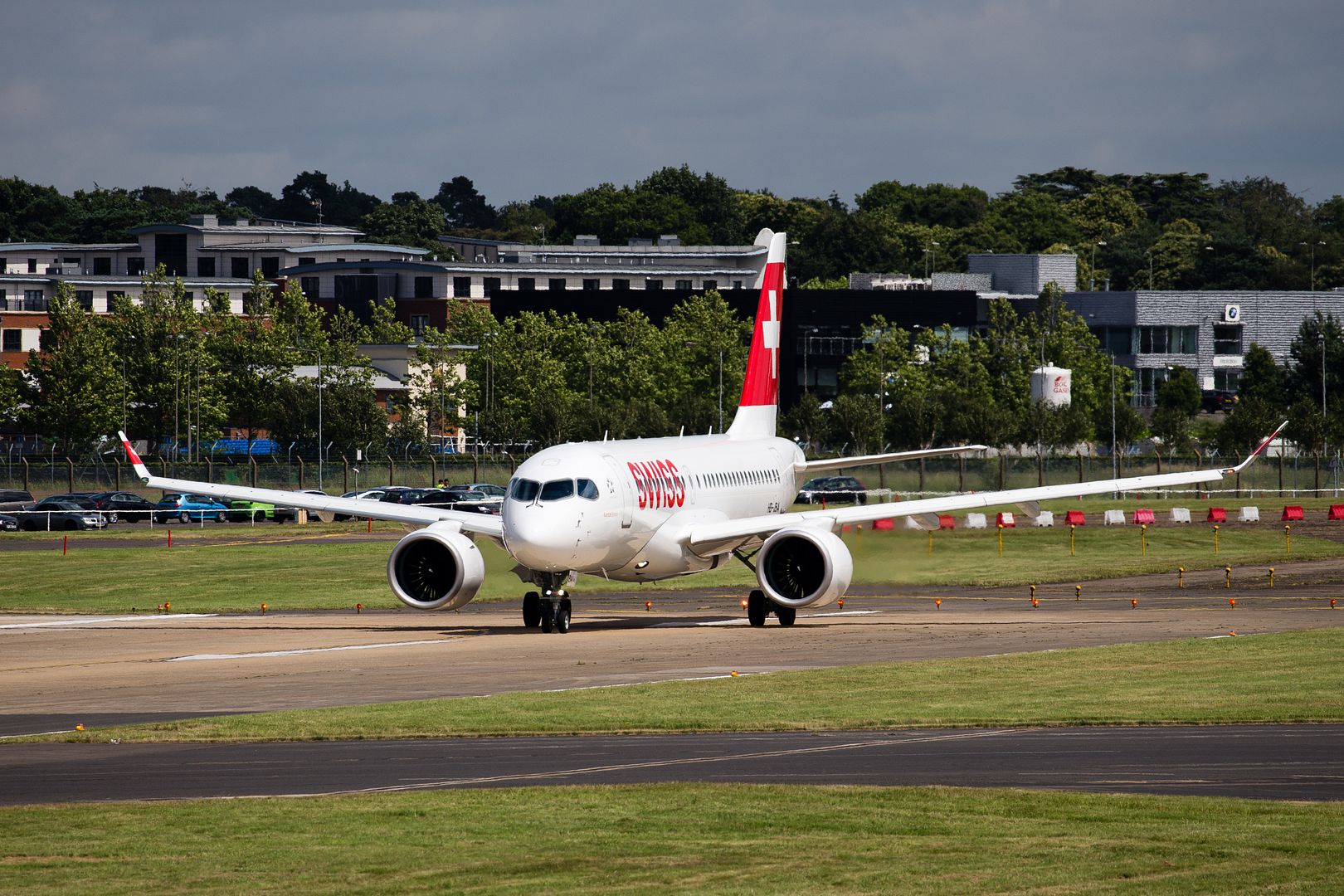
Bombardier also launched the Q400 Multi-Role aircraft to meet the diverse and demanding needs of customers. The fully certified Q400 Multi-Role aircraft can be tailored for firefighting, cargo transport, passenger transport, disaster relief and medical evacuation. The aircraft is rapidly reconfigurable and systems can be swapped in and out easily to meet operational and network requirements.
Bombardier had a highly visible presence in the aircraft static display with a flybe Q400 turboprop, a CRJ1000 regional jet from Air Nostrum, and CS100 flight test vehicle five (FTV5) in SWISS colours. FTV5 also conducted three demonstration flights on July 10 hosting media, C Series aircraft program suppliers and government representatives. SWISS? first delivered CS100 aircraft also appeared at Farnborough and opened the flying display on July 11 when it departed for Zurich to launch revenue service.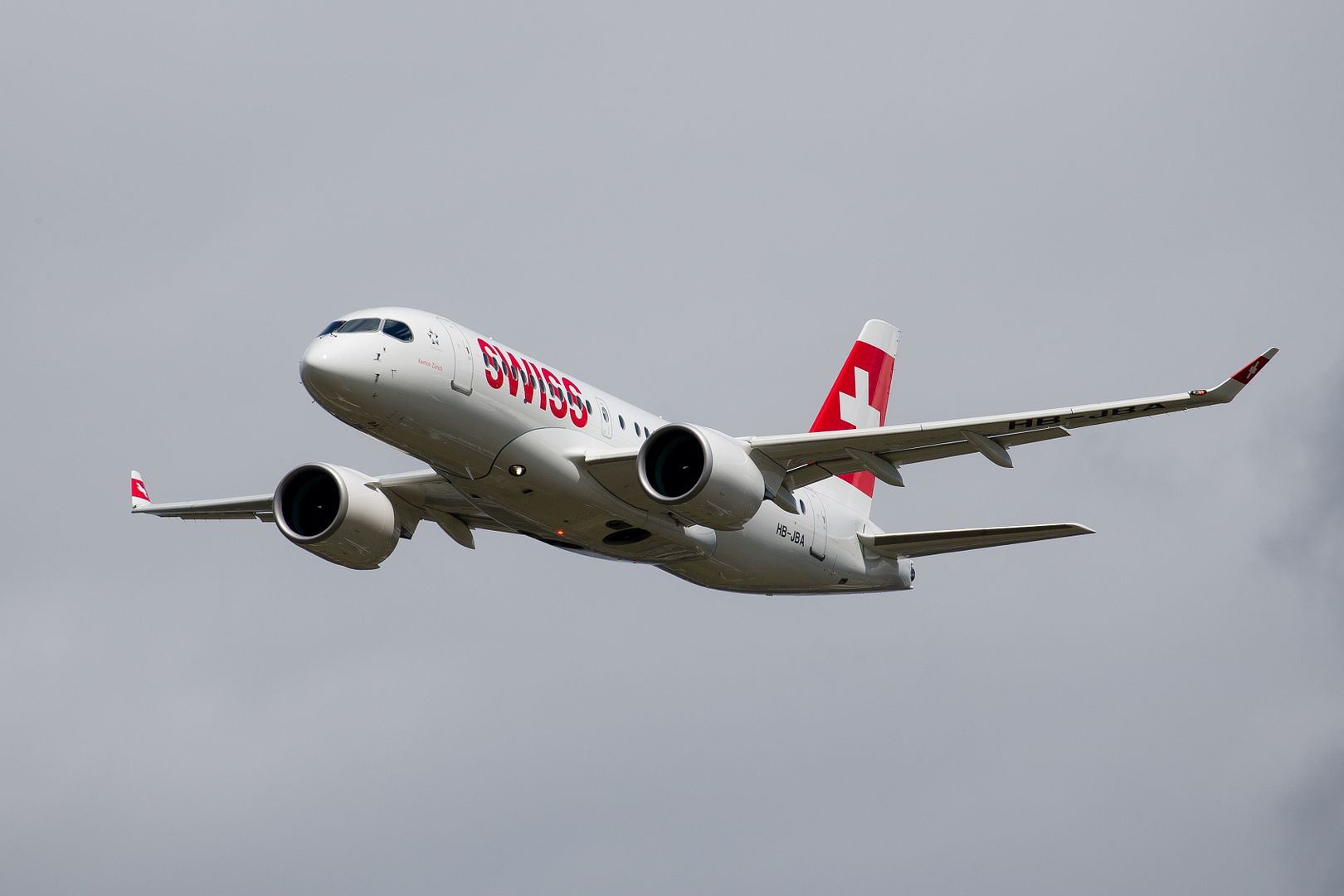
GULF OF ADEN (July 14, 2016) - An F/A-18F Super Hornet assigned to the Fighting Swordsmen of Strike Fighter Squadron (VFA) 32 makes an arrested landing on the flight deck of the aircraft carrier USS Dwight D. Eisenhower (CVN 69) (Ike). Ike and its Carrier Strike Group are deployed in support of Operation Inherent Resolve, maritime security operations and theater security cooperation efforts in the U.S. 5th Fleet area of operations. (U.S. Navy photo by Mass Communication Specialist 3rd Class Anderson W. Branch/Released)
-
8 years agoSun Jul 17 2016, 08:47pm
 Main AdminA B-29 Superfortress, known as ?Doc,? takes off for the first time in approximately 60 years, July 17, 2016, at McConnell Air Force Base, Kan. A restoration team worked on the aircraft for the last 16 years to prepare it for flight. (U.S Air Force photo/Airman Erin McClellan)
Main AdminA B-29 Superfortress, known as ?Doc,? takes off for the first time in approximately 60 years, July 17, 2016, at McConnell Air Force Base, Kan. A restoration team worked on the aircraft for the last 16 years to prepare it for flight. (U.S Air Force photo/Airman Erin McClellan)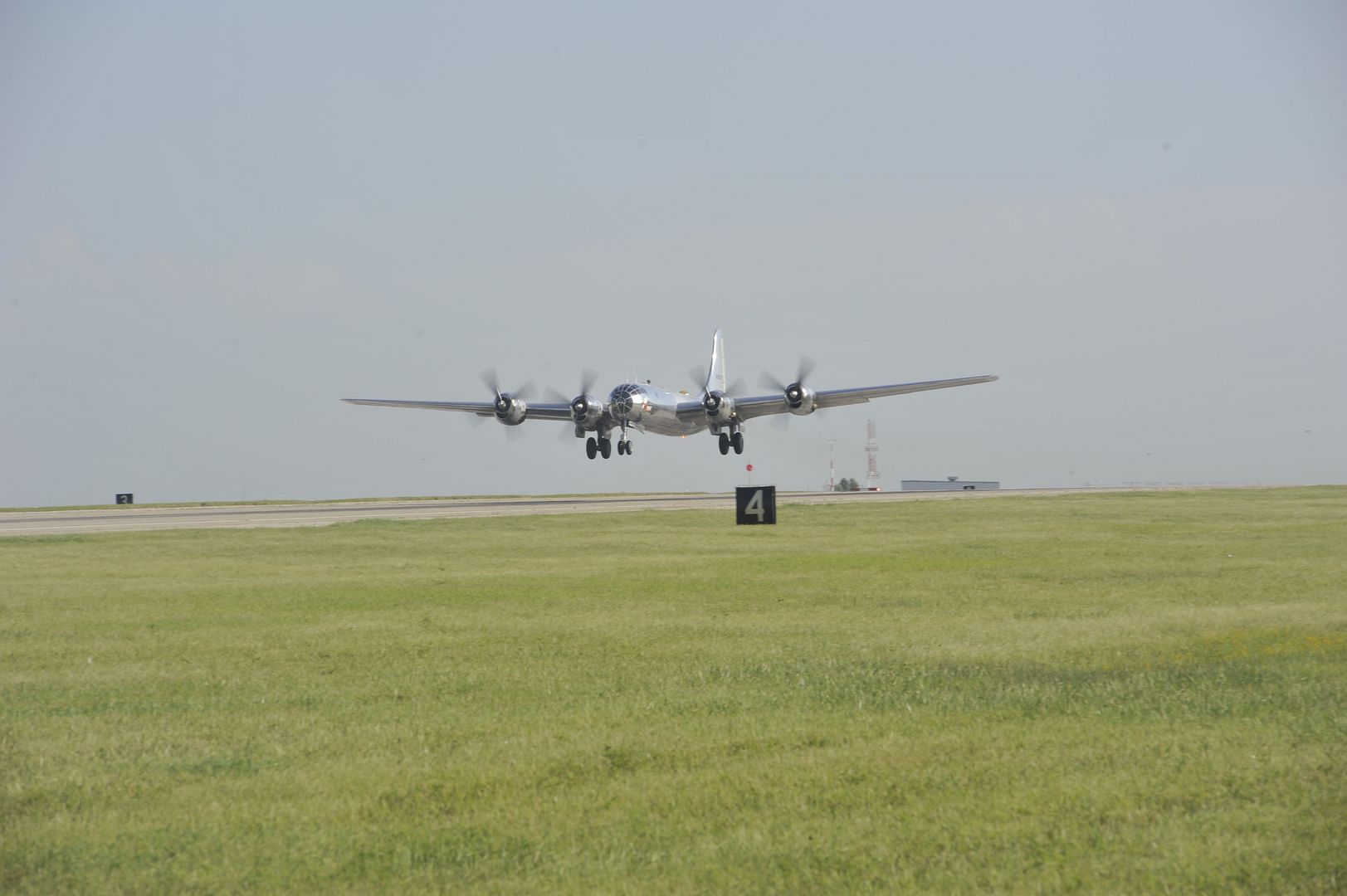
A B-29 Superfortress, known as ?Doc,? flies over McConnell Air Force Base Kan., July 17, 2016. This was the aircraft?s first flight after being used by the U.S. Navy as a target for weapons system training in the Mojave Desert for 42 years. (U.S Air Force photo's/Airman Erin McClellan)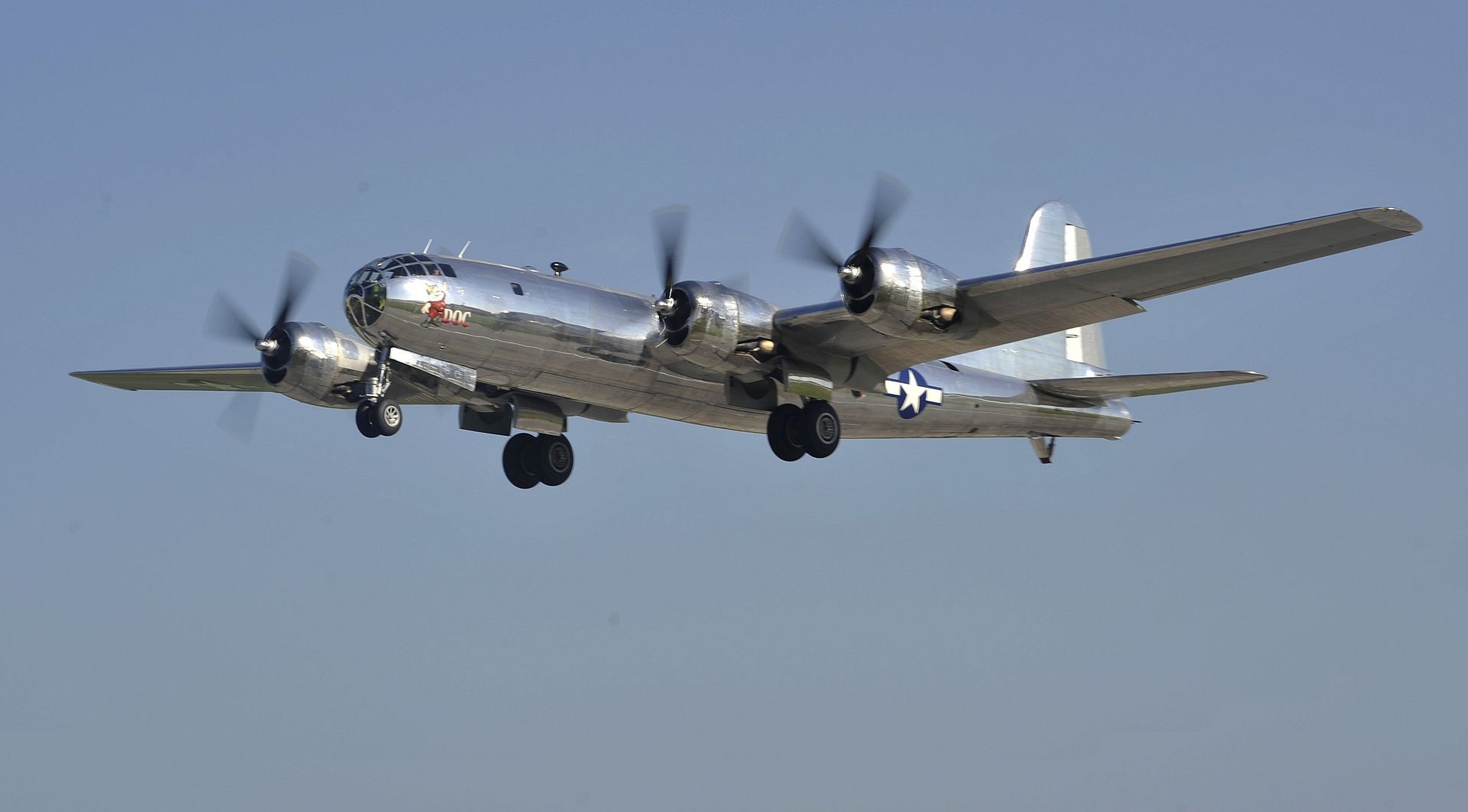
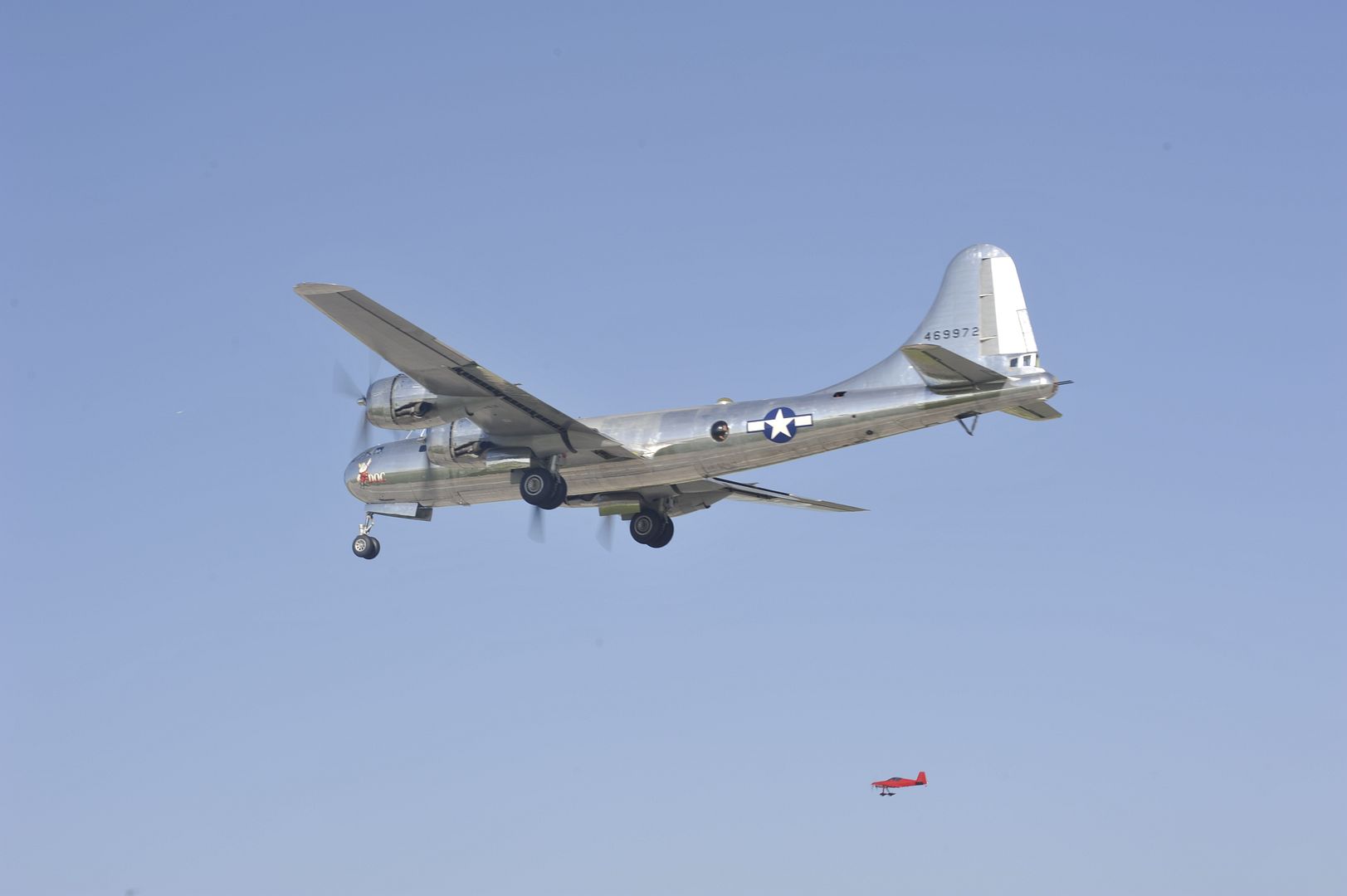
-
 Main AdminCAPE CANAVERAL AIR FORCE STATION, Fla. (AFNS) -- The 45th Space Wing supported SpaceX?s successful launch of a Falcon 9 Dragon spacecraft headed to the International Space Station from Space Launch Complex 40 here July 18.
Main AdminCAPE CANAVERAL AIR FORCE STATION, Fla. (AFNS) -- The 45th Space Wing supported SpaceX?s successful launch of a Falcon 9 Dragon spacecraft headed to the International Space Station from Space Launch Complex 40 here July 18.
At approximately eight minutes after the launch, SpaceX successfully landed the Falcon 9 first-stage booster at Landing Zone 1 on Cape Canaveral Air Force Station. The flyback mission was the second successful one for SpaceX following its historic first landing of a first-stage booster on Landing Zone 1 in December 2015.
This Falcon 9 Dragon launch was the 13th major launch operation for the Eastern Range this year, and marks the ninth contracted mission by SpaceX under NASA?s commercial resupply services contract.
A combined team of military, government civilians and contractors from across the 45th SW provided support to the mission, including weather forecasts, launch and range operations, security and safety.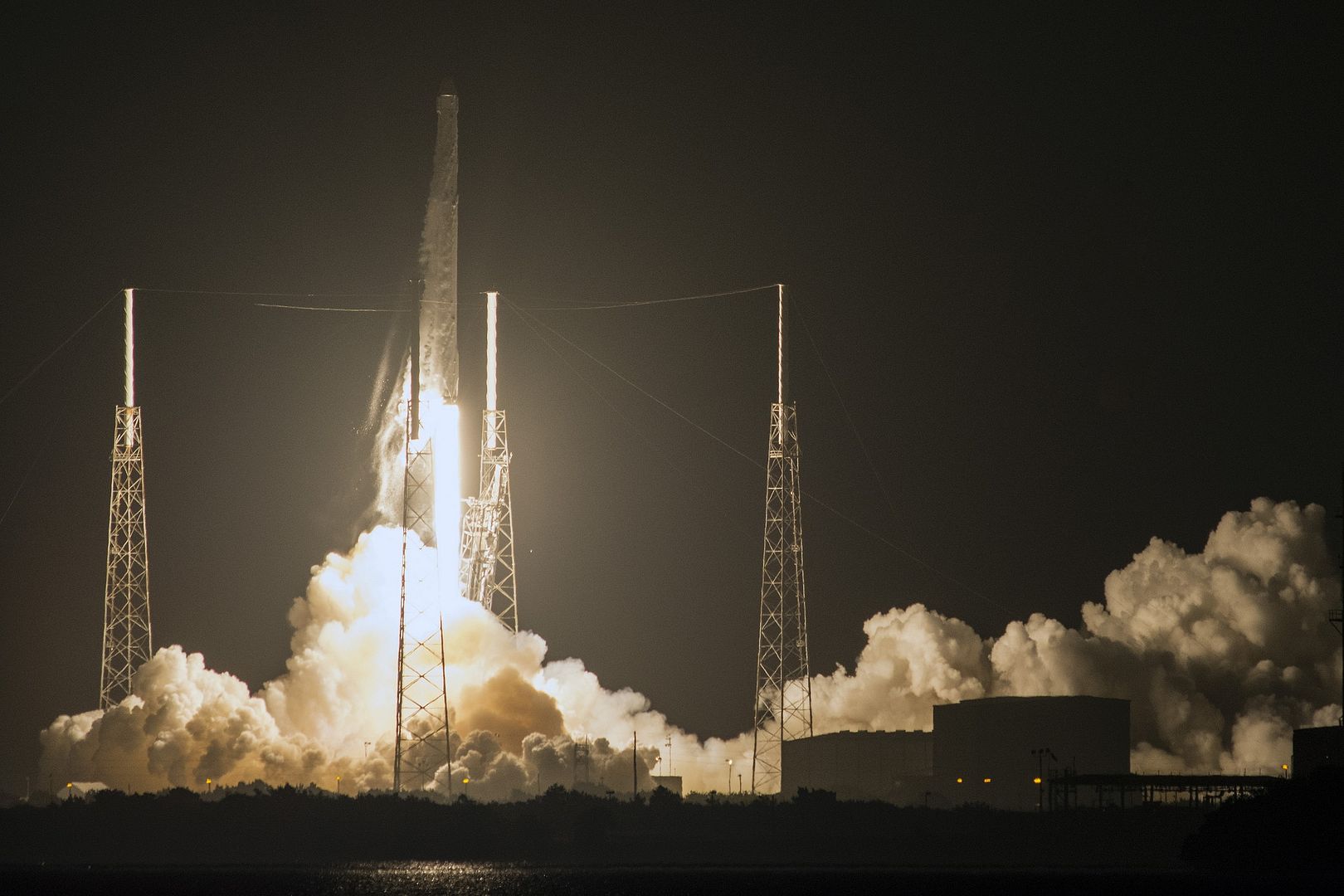
?I am proud of the integrated team who worked together flawlessly to make this launch a success,? said Brig. Gen. Wayne Monteith, the 45th SW commander, who served as the mission?s launch decision authority. ?Everyone's hard work and dedication paid off today. This mission once again clearly demonstrates the successful collaboration we have with our mission partners at NASA and SpaceX as we continue to shape the future of America's space operations, and serve as the world?s premier gateway to space.?
WRIGHT-PATTERSON AIR FORCE BASE, Ohio (AFNS) -- The KC-46 Pegasus program completed all flight tests required for the Milestone C production decision July 15 by offloading 1,500 pounds of fuel to an A-10 Thunderbolt II.
The successful A-10 mission was the last of six in-flight refueling demonstrations required before the tanker program can request approval from Frank Kendall, the under secretary of defense for acquisition, technology and logistics, to award production Lots 1 and 2, totaling 19 KC-46A aircraft.
?It is great to see the KC-46 boom back in action and the program moving forward to a production decision? said Col. John Newberry, the KC-46 system program manager.
The other five required air refueling demonstrations were with the C-17 Globemaster III and F-16 Fighting Falcon using the air refueling boom, the Navy?s F-18 Hornet and AV-8B Harrier II using the centerline and wing drogue systems, and the KC-46 as a receiver aircraft.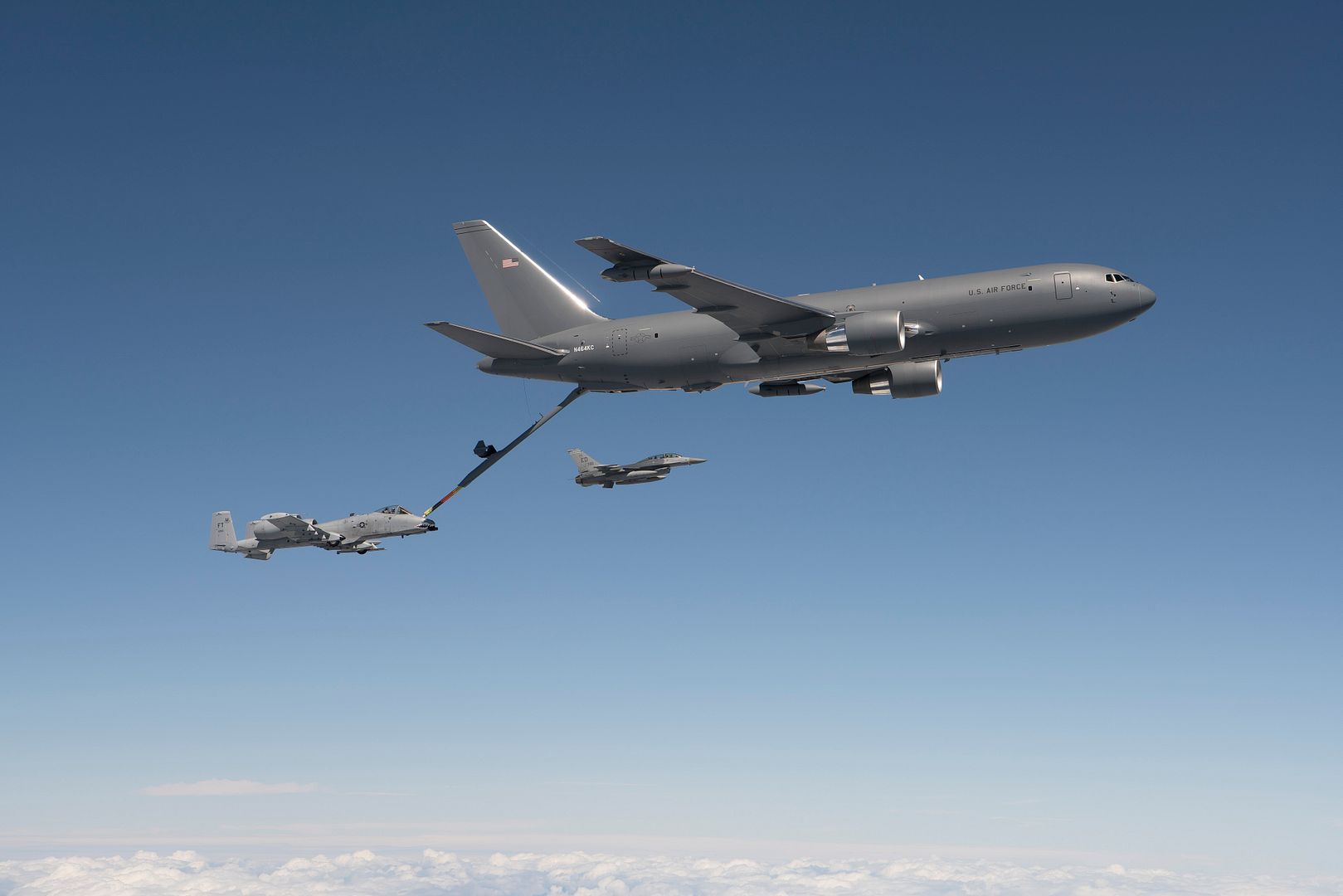
"Today's flight marks the final step we needed to see on the boom fix in order to request production go-ahead,? said Brig. Gen. Duke Richardson, the Air Force program executive officer for tankers. ?Our joint team's tireless efforts are paying off, preparing us for the next step of this critical need to our warfighter."
This test would not have been possible without contributions from the 412th Test Wing, 23rd Fighter Wing, 355th FW, 124th FW, 896th Test Support Squadron and 40th Flight Test Squadron, which all provided aircraft, manpower and equipment.
The Milestone C decision to begin low-rate initial production is expected in August.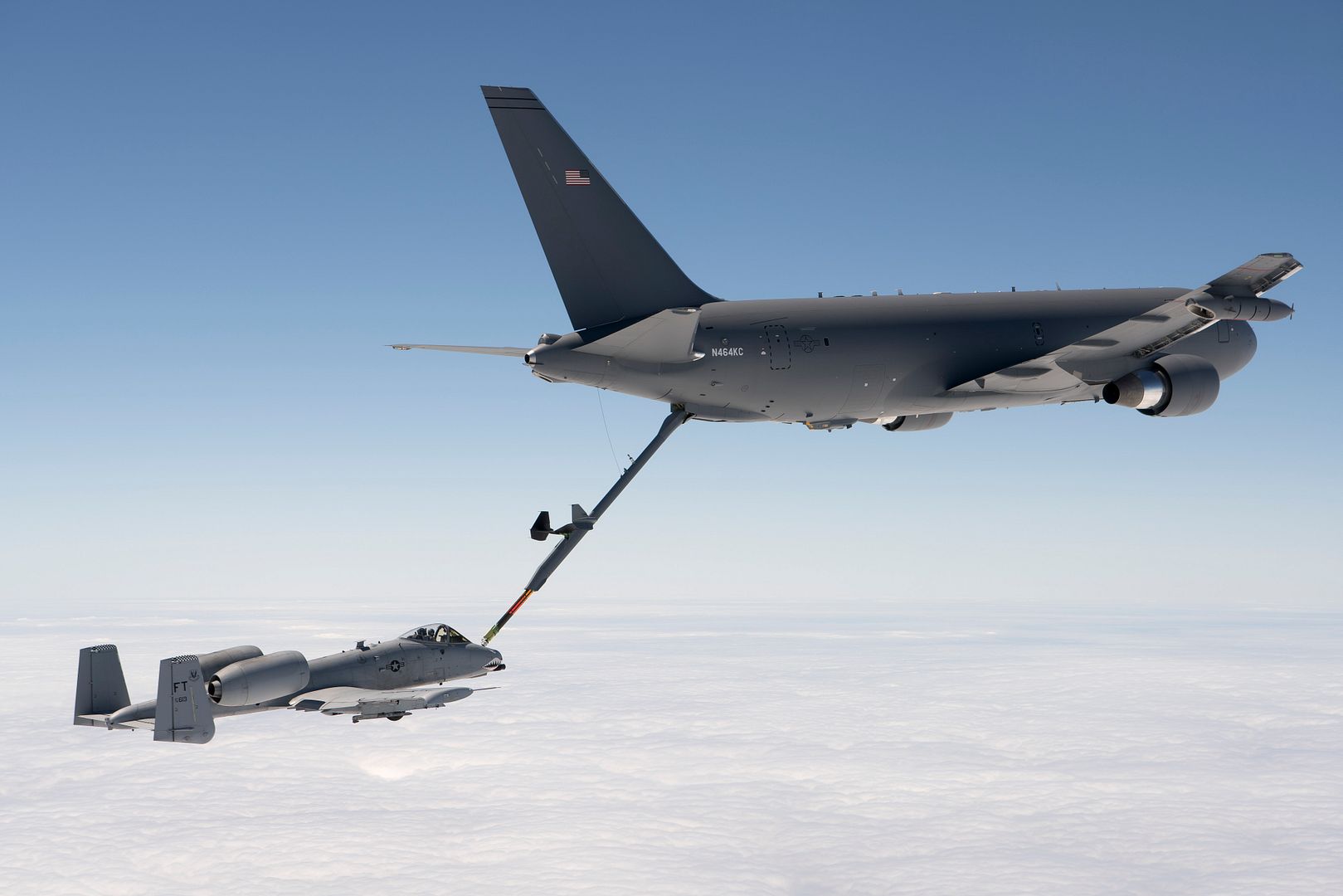
-
8 years agoTue Jul 19 2016, 10:26am
 Main AdminPACIFIC OCEAN (JULY 17, 2016) A Royal New Zealand Air Force Orion P-3K2 during a torpedo exercise over the Pacific Ocean during Rim of the Pacific 2016. Twenty-six nations, more than 40 ships and submarines, more than 200 aircraft and 25,000 personnel are participating in RIMPAC from June 30 to Aug. 4, in and around the Hawaiian Islands and Southern California. The world's largest international maritime exercise, RIMPAC provides a unique training opportunity that helps participants foster and sustain the cooperative relationships that are critical to ensuring the safety of sea lanes and security on the world's oceans. RIMPAC 2016 is the 25th exercise in the series that began in 1971. (Royal New Zealand Navy Photo's by Petty Officer Chris Weissenborn).
Main AdminPACIFIC OCEAN (JULY 17, 2016) A Royal New Zealand Air Force Orion P-3K2 during a torpedo exercise over the Pacific Ocean during Rim of the Pacific 2016. Twenty-six nations, more than 40 ships and submarines, more than 200 aircraft and 25,000 personnel are participating in RIMPAC from June 30 to Aug. 4, in and around the Hawaiian Islands and Southern California. The world's largest international maritime exercise, RIMPAC provides a unique training opportunity that helps participants foster and sustain the cooperative relationships that are critical to ensuring the safety of sea lanes and security on the world's oceans. RIMPAC 2016 is the 25th exercise in the series that began in 1971. (Royal New Zealand Navy Photo's by Petty Officer Chris Weissenborn).
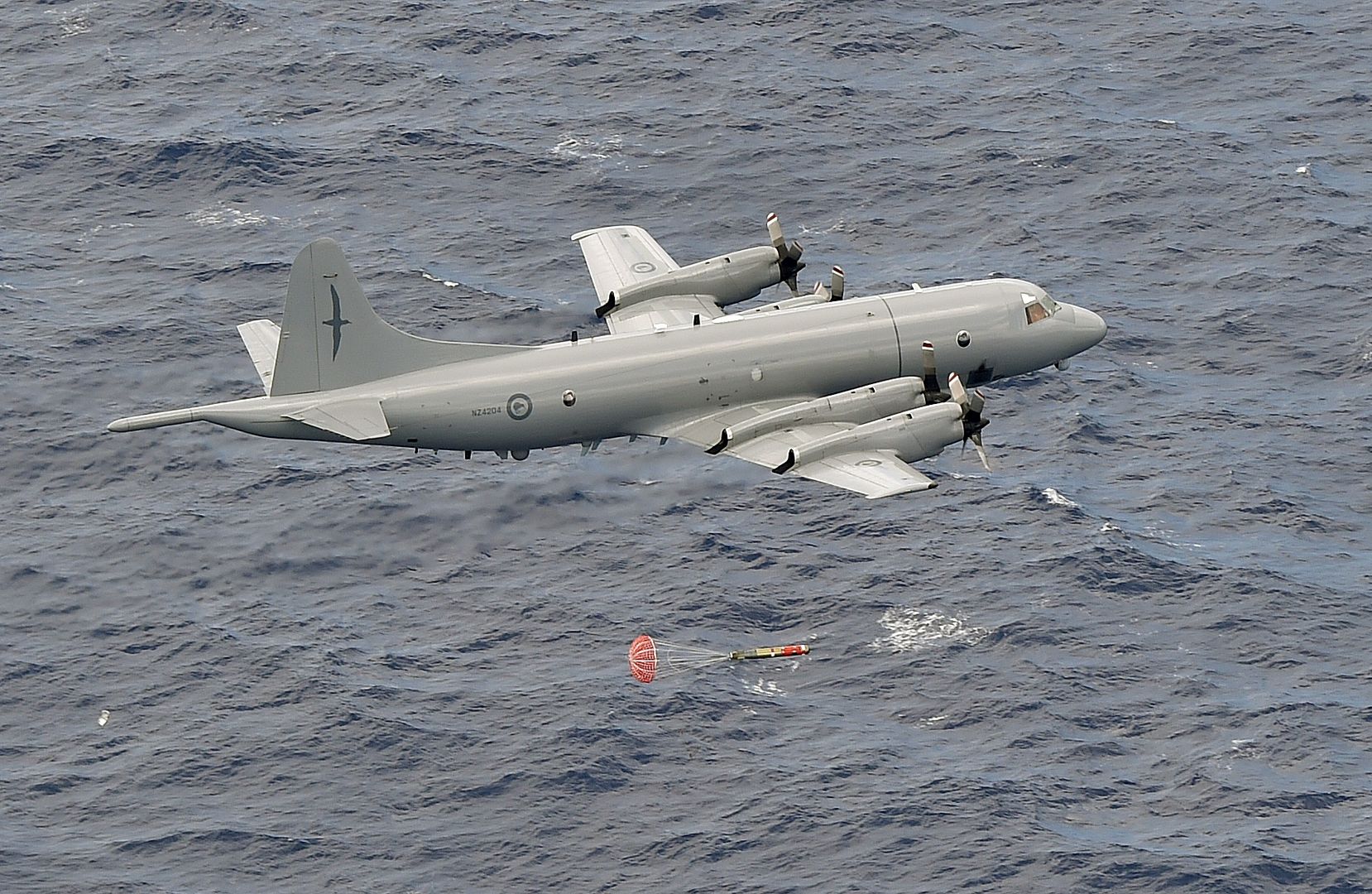
PA474 of the BBMF in the air again after a successful air test on Sunday.
Link -- https://www.facebook.com/BBMF.Official/photos/a.216992238355797.55827.216980461690308/1044183075636705/?type=3&theater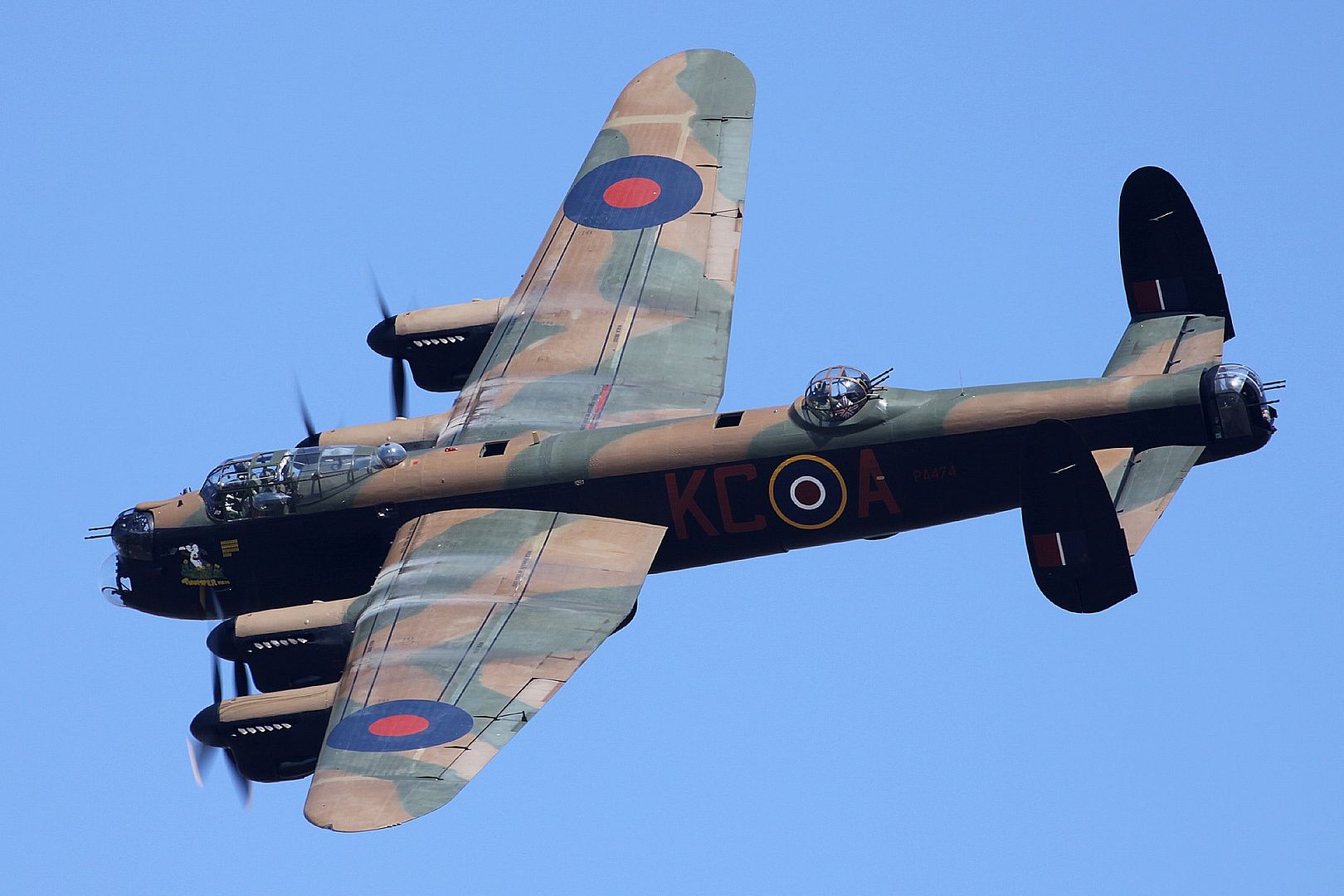
-
 Main AdminSLIA? AIR BASE, Slovakia (AFNS) -- The 122nd Fighter Wing has deployed eight A-10 Thunderbolt IIs and about 140 Airmen here for a month-long combined training event in support of Operation Atlantic Resolve.
Main AdminSLIA? AIR BASE, Slovakia (AFNS) -- The 122nd Fighter Wing has deployed eight A-10 Thunderbolt IIs and about 140 Airmen here for a month-long combined training event in support of Operation Atlantic Resolve.
The Airmen will conduct training and familiarization events alongside Slovak Armed Forces, a NATO ally. In addition, they will also participate in cross-border training with other deployed U.S. Air Force and NATO aircraft in the region. As part of Operation Atlantic Resolve, this deployment continues to demonstrate America?s commitment to its allies and deterrence efforts against Russia.
The 163rd Expeditionary Fighter Squadron, part of the 122nd FW, will fly with the Slovak Air Force to demonstrate close air support capabilities and conduct familiarization classroom events to further integrate the two air forces. The classroom events include safety procedures, further air combat maneuver discussions and air surveillance techniques. The unit will also participate in cross-border flights with deployed U.S. Air Force total force partners flying F-16 Fighting Falcons, KC-135 Stratotankers, C-130 Hercules and other aircraft from allied nations.
This is the first deployment of the 163rd EFS to Slia? Air Base. However, Indiana, where the 122nd FW is stationed, has held a robust state partnership with Slovakia since 1993. The State Partnership Program (SPP) has been successfully building relationships for over 20 years that includes 70 unique security partnerships involving 76 nations around the globe. SPP links a unique component of the Defense Department , a state's National Guard, with the armed forces or equivalent of a partner country in a cooperative, mutually beneficial relationship.
These rotation forces are the cornerstone for increasing U.S. military combat capabilities, which are essential to fulfilling the nation?s European security obligations. These deployments reinforce the U.S. commitment to NATO during an unpredictable and uncertain time.
The deployed Airmen have been through extensive preparation, ranging from cultural awareness to weapons qualification and medical training. These Airmen will carry out the same job overseas that they?ve been trained on each month as 122nd FW guardsmen.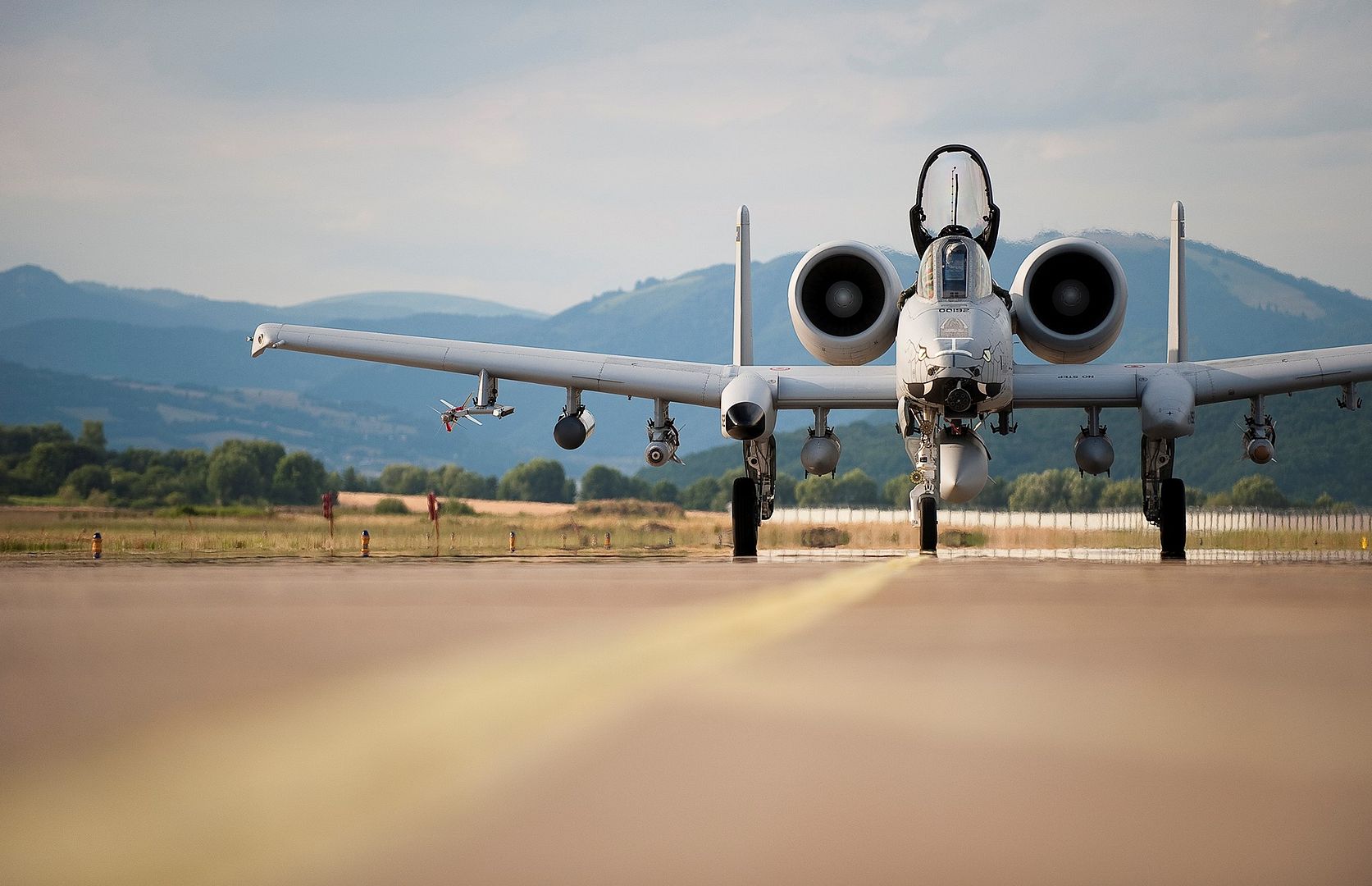
ELLSWORTH AIR FORCE BASE, S.D. (AFNS) -- Navy EA-18G Growlers have joined B-1B Lancers during the past several weeks in the skies around Ellsworth Air Force Base for electronic attack training.
This marked the first time the Navy?s Electronic Attack Squadron 129 (VAQ-129), stationed at Naval Air Station Whidbey Island, Washington, traveled to Ellsworth AFB to conduct training in its local airspace. The training was conducted in June and is also taking place from July 11-22.
Navy pilots and electronic warfare officers utilized the unique components of the Powder River Training Complex airspace to help accomplish its role as the fleet replenishment squadron for the EA-18G.
?We are one of two aircraft in the U.S. military inventory that is capable of accomplishing the electronic attack role,? said Navy Lt. Matthew Galamison, an EA-18G instructor. ?It?s very important that our aircrew get the training and range that they need with the proper emitters in order to practice against threats that are out there.?
Part of the Growler?s mission in combat is to deny, degrade or delay the enemies? ability to acquire and engage friendly air forces and also give bombers or fighters access to those targeted areas, Galamison said. During the EA-18G?s time at Ellsworth AFB, B-1B bombers have joined the Navy aircraft to train to these sorts of mission sets.
The lethality of worldwide anti-access and area-denial capabilities and the need to operate in a contested electromagnetic spectrum shows the necessity for electronic warfare missions.
?This training is unique,? said Air Force Lt. Col. Allen Geist, the 390th Electronic Combat Squadron commander. ?The Growler community is the one community that strategically looks at using electronic warfare, an ability that allows our aircraft to access denied environments.?
VAQ-129 has the distinct role of providing airborne electronic attack training for both the Air Force and Navy. Its home station, NAS Whidbey Island, also hosts the 390th ECS, the Air Force?s sole AEA unit at NAS Whidbey Island, as part of the Joint Airborne Electronic Attack Program. The 390th ECS is a geographically separated unit of the 366th Operations Group out of Mountain Home AFB, Idaho.
Historically, the Air Force had its own dedicated electronic warfare aircraft that flew escort for large strike packages. They would crack open bristling networks of search-and-track radars, surface-to-air missiles, and anti-aircraft artillery batteries, collectively known as integrated air defenses.
In 1995, after the Air Force divested its AEA aircraft, the Office of the Secretary of Defense directed electronic warfare Airmen be embedded with the Navy?s EA-6B Prowlers, and now EA-18G. Under a memorandum of understanding between the Air Force and Navy, select Air Force EWOs and pilots continue to embed on Navy electronic warfare missions through a competitive exchange program.
?The Air Force has always been interested in maintaining a knowledge of airborne electronic attack,? Galamison said. ?There are more capable threats with new tactics emerging, which is why the exchange program between the Air Force and Navy exist so both B-1 and F-15 (Eagle) aircrew can come to Whidbey for one to a couple of years to learn how airborne electronic attack operates.?
Galamison added with the exchange program, Air Force aircrews can take the knowledge they have learned on AEA and bring it back to the Air Force to make integration of other aircrews easier during large force exercises, such as those held in the Powder River Training Complex.
?The great thing about coming out to Ellsworth to use the Powder River Training Complex is its size and threat emitters that we can utilize,? said Geist, a former B-1B weapon systems officer. ?It gives us a great training opportunity and definitely builds the foundation for the electronic weapons officers to have the expertise to take down enemy integrated air defense systems.?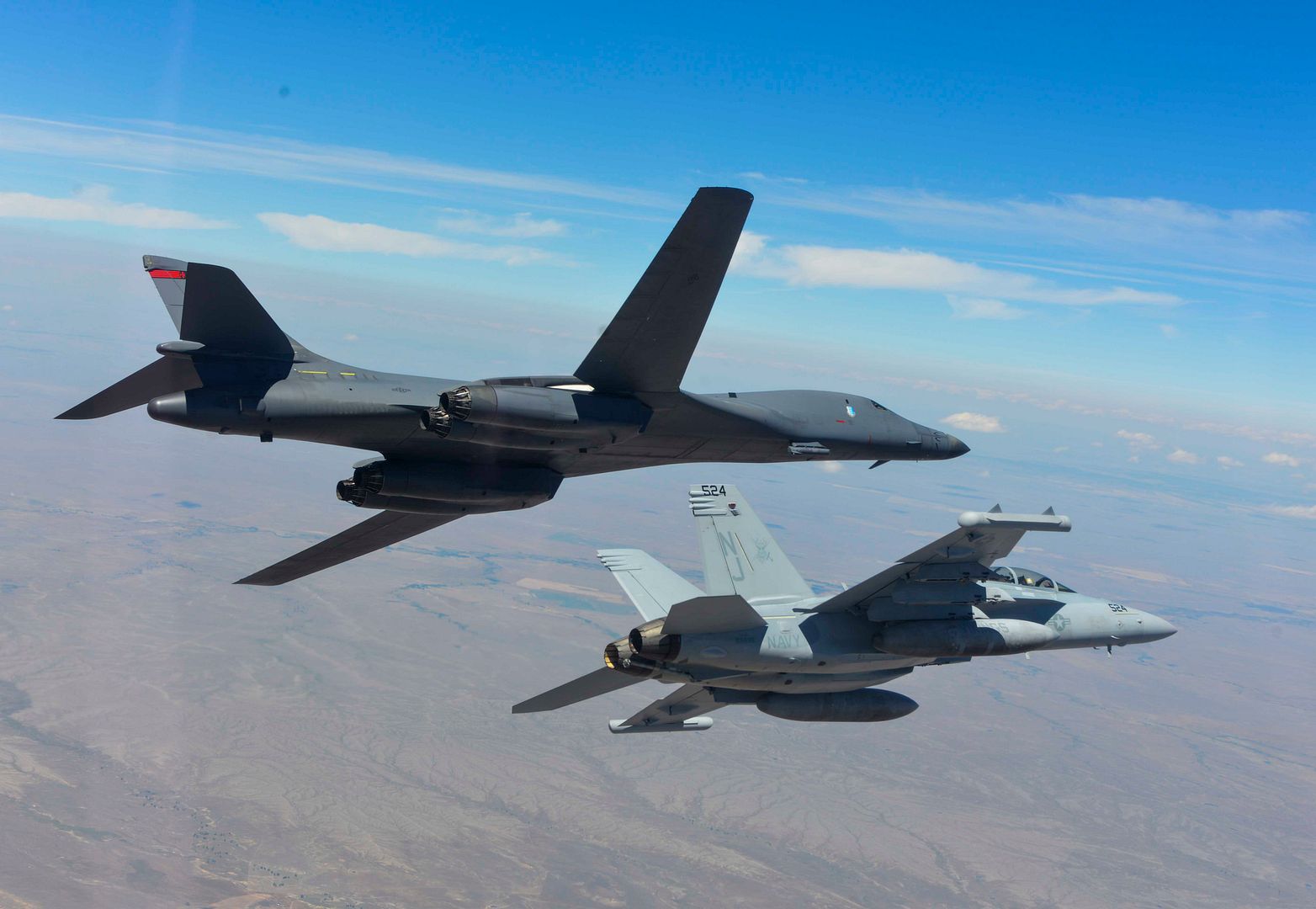
NELLIS AIR FORCE BASE, Nev. (AFNS) -- The three-week long Red Flag 16-3, a U.S.-only exercise that tests all participating units? combat capabilities in a joint environment that centers on multi-domain integration, kicked off here July 11.
Red Flag is the service?s premier air-to-air combat training exercise and one of a series of advanced training programs administered by the U.S. Air Force Warfare Center and executed through the 414th Combat Training Squadron. Previous Red Flag exercises have provided experiences to master the air domain, but todays? exercises must incorporate all domains.
?We fly, fight and win in air, space and cyberspace. This is the exercise where we?ll put this to the test,? said Col. DeAnna Burt, the Red Flag 16-3 Air Expeditionary Wing commander.
Burt is the first space domain leader to ever command an AEW at a Red Flag exercise, a position that has traditionally been staffed by aviators. She will lead the joint operation into accomplishing its main objective of ?establishing habits of achieving multi-domain combat success today to enable the rapid defeat of America?s adversaries tomorrow.?
As an AEW commander, Burt will be focused on multi-domain execution and will be engaging participants to determine how they plan to utilize the capabilities of all domains to supplement a tactical mission.
?We want to force people out of their comfort zone. We?ll be pushing them to talk about kinetic and non-kinetic effects and how when they are synchronized achieve tactical success,? the colonel explained.
Historically, the exercise?s third iteration of the year is a U.S.-only operation. This year, 115 aircraft from 25 Defense Department units will be operating at the Nevada Test and Training Range (NTTR), the Air Force?s premier military training area with more than 15,000 square miles of airspace and 2.9 million acres of land. And for the first time, an F-35 Lightning II is participating in the exercise. The aircraft is from the, Marine Fighter Attack Squadron 121, 3rd Marine Aircraft Wing, based at Marine Corps Air Station Yuma, Arizona.
Red Flag 16-3 participants are faced with 1,900 possible targets, realistic threat systems and an opposing enemy force that cannot be replicated anywhere else in the world. Nellis Air Force Base and the NTTR are the home of a simulated battlefield, providing combat air forces the ability to train to fight together in a peacetime environment, and to survive and win together.
A 555th Fighter Squadron F-16 Fighting Falcon from Aviano Air Base, Italy, takes off from Nellis Air Force Base, Nev., July 11, 2016, as part of exercise Red Flag 16-3. Red Flag is the Air Force?s premier air-to-air combat training exercise and one of a series of advanced training programs administered by the U.S. Air Force Warfare Center and executed through the 414th Combat Training Squadron. (U.S. Air Force photo/Tech. Sgt. Julius Delos Reyes)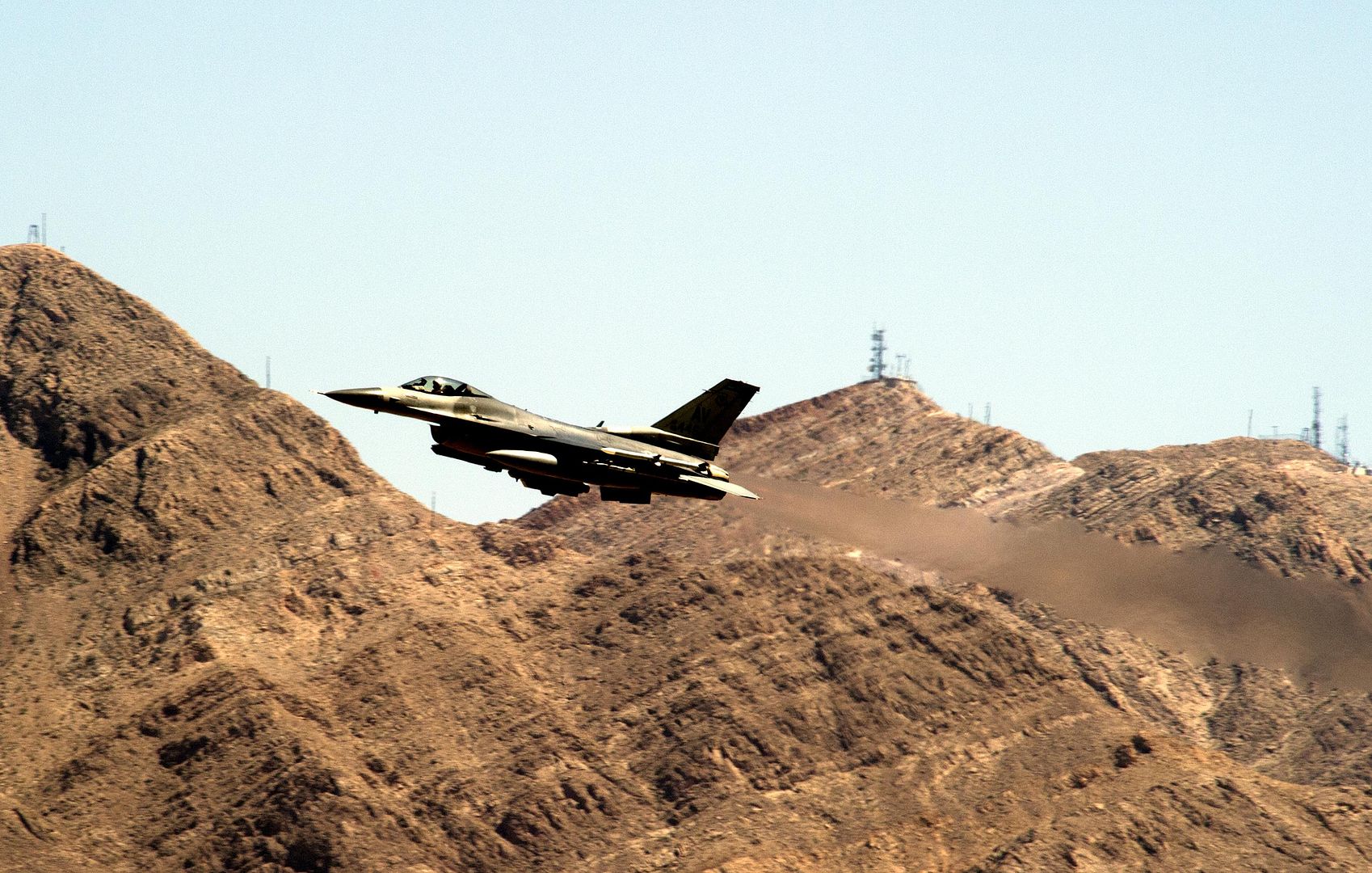
KC-135 Stratotanker pilots and boom operators from across Air Mobility Command are the sole source of air refueling for participants of Red Flag 16-3 at Nellis Air Force Base, Neveda. Red Flag 16-3 is one of four Red Flag exercises at Nellis--this edition of Red Flag focusing on multi-domain operations in air, space and cyberspace. (U.S. Air Force photo/Tech. Sgt. David Salanitri)
An F-22 Raptor from Langley Air Force Base, Virginia approaches for ruefling by a KC-135 Stratotanker July 18, 2016 while taking part in exercise Red Flag at Nellis Air Force Base, Nevada. Red Flag 16-3 is one of four Red Flag exercises at Nellis--this edition of Red Flag focusing on multi-domain operations in air, space and cyberspace. (U.S. Air Force photo/Tech. Sgt. David Salanitri)
A U.S. Air Force F-22 Raptor assigned to Langley Air Force Base transits after refueling from a KC-135 Stratotanker during exercise Red Flag at Nellis Air Force Base, Nev., July 18, 2016. Red Flag 16-3 is one of four Red Flag exercises at Nellis, this iteration specifically focusing on multi-domain operations in air, space and cyberspace. (U.S. Air Force photo by Tech. Sgt. David Salanitri)
An F-22 Raptor from Langley Air Force Base, Virginia moments after refueling from a KC-135 Stratotanker July 18, 2016 while taking part in exercise Red Flag at Nellis Air Force Base, Nevada. Red Flag 16-3 is one of four Red Flag exercises at Nellis--this edition of Red Flag focusing on multi-domain operations in air, space and cyberspace. (U.S. Air Force photo/Tech. Sgt. David Salanitri)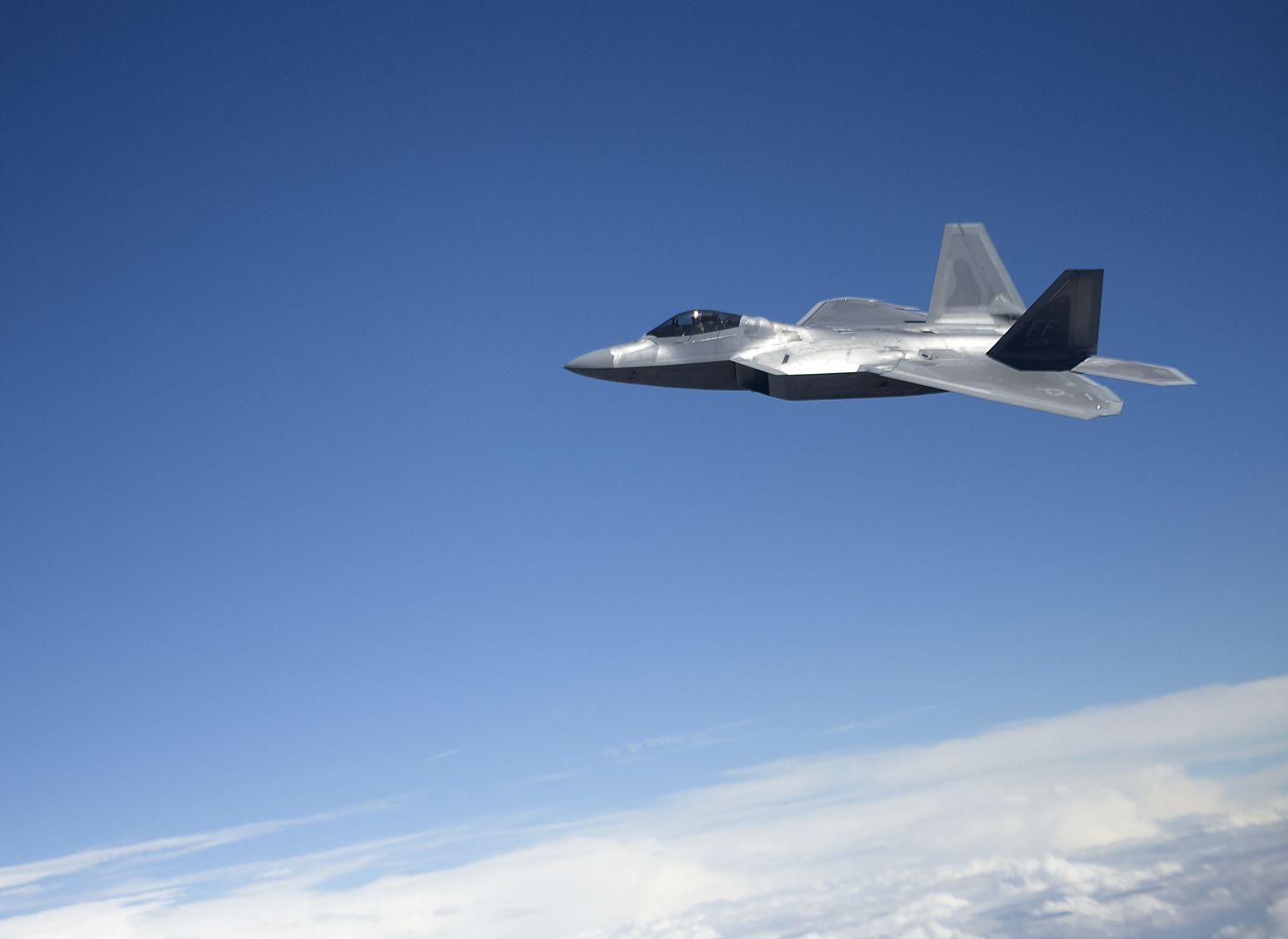
Maj. Carl Maymi, a U-2 pilot with the 1st Reconnaissance Squadron from Beale Air Force Base, Cali., prepares for take off on Nellis Air Force Base, Nevada July 18, 2016. This is the first time this decade the U-2 has flown in Red Flag while staging out of Nellis Air Force Base. (U.S. Air Force photo/Tech. Sgt. David Salanitri)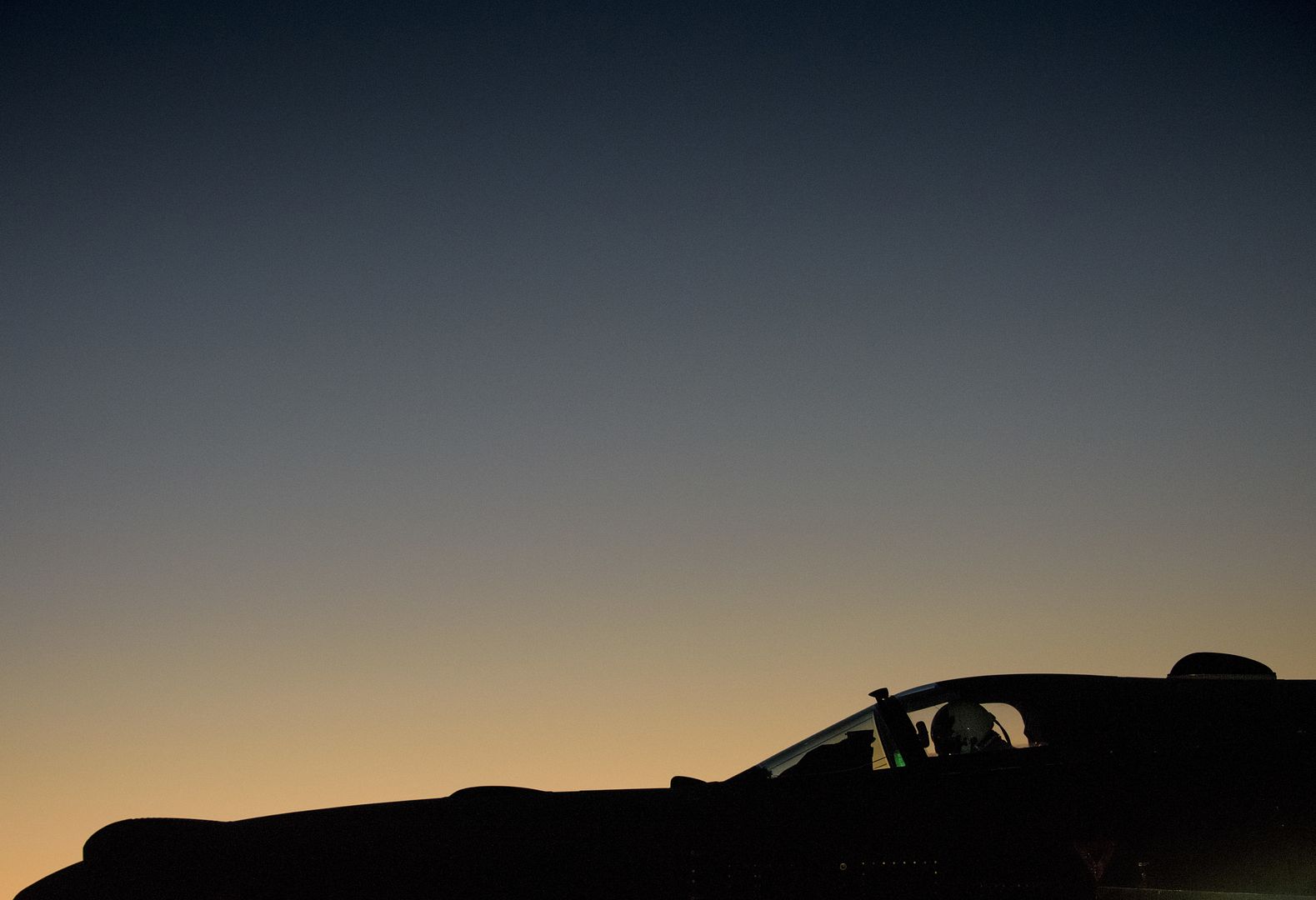
Landing with the Las Vegas strip in the background, Maj. Carl Maymi, a U-2 pilot with the 1st Reconnaissance Squadron from Beale Air Force Base, Cali., touches down on Nellis Air Force Base, Nevada July 18, 2016. This is the first time this decade the U-2 has flown in Red Flag while staging out of Nellis Air Force Base. (U.S. Air Force photo/Tech. Sgt. David Salanitri)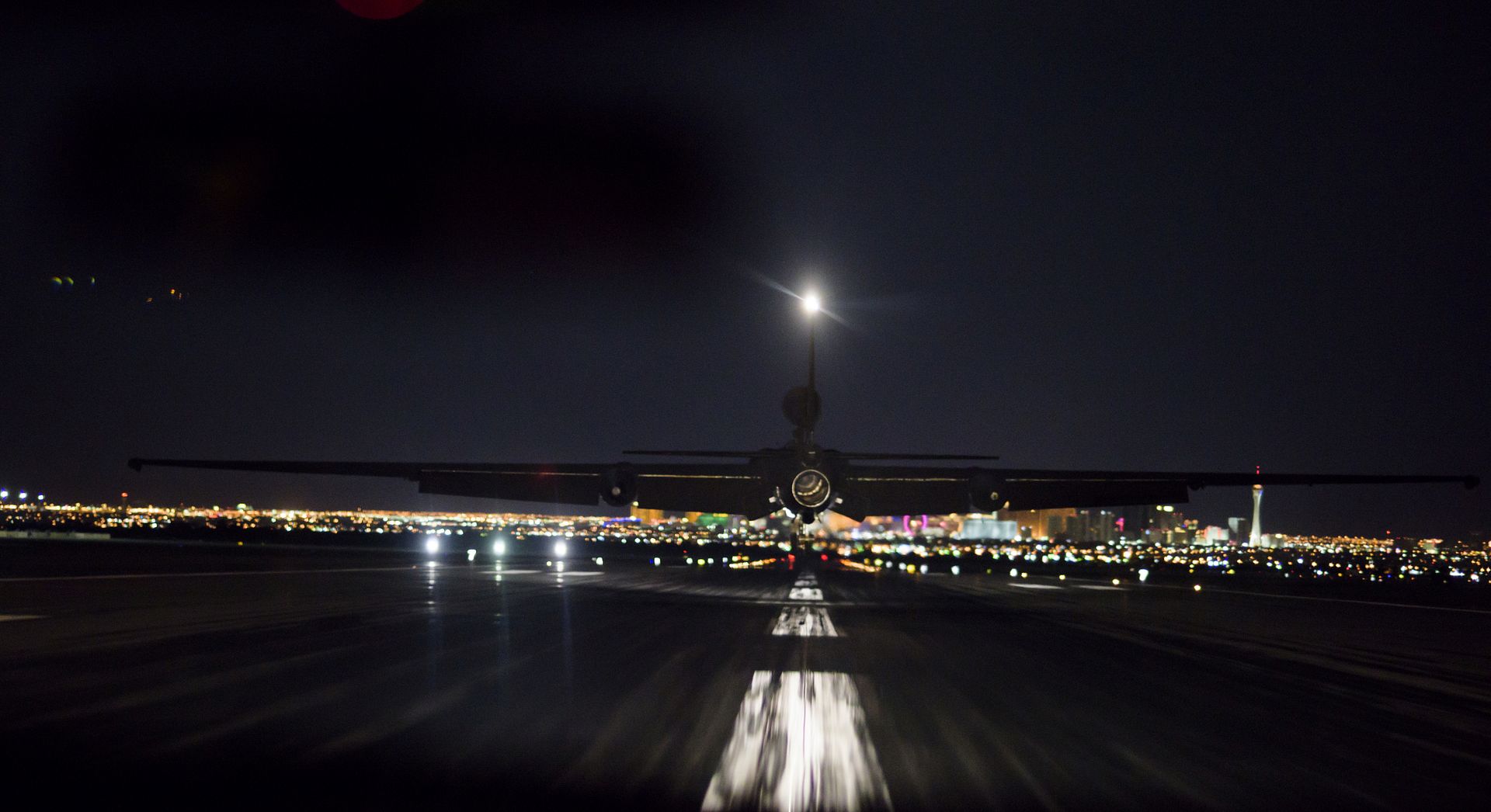
NELLIS AIR FORCE BASE, Nev. - For the first time, the United States Marine Corps will be participating with their F-35B during the three-week Red Flag 16-3 exercise at Nellis Air Force Base, Nevada.
With the Marine Corps bringing this multi-role, next generation fighter, this year?s 16-3 iteration of Red Flag marks a historic moment in the Air Force?s premier air combat training exercise.
Working with multiple branches, the F-35B, assigned to the Marine Fighter Attack Squadron 121, which is part of 3rd Marine Aircraft Wing and based out of Marine Corps Air Station Yuma, Arizona, will be an intricate part of the demanding exercise that provides aircrews with multiple and intense air combat sorties in a controlled training environment.
?Red Flag is a military integration, getting to work hand-in-hand with the Air Force, Navy, and Army that are all out here,? said Sgt. Jason Gilbert, VMFA-121 mechanic. ?Just bringing all of the U.S.?s combat air forces together to show we are one team, one fight. We can get this done.?
Since the F-35 program is operational and rapidly accelerating the opportunity to work in a joint environment is a valuable aspect of this Red Flag for the Marines, as well as their only opportunity before being based at Marine Corps Air Station in Iwakuni, Japan.
?For us this is our one opportunity to integrate in multi-service before being based in January of 2017,? said Maj. Brendan Walsh, VMFA-121 operations officer. ?Red Flag also provides us the opportunity to integrate and train in a multi-service, contested environment.?
The training provided during Red Flag has been a smooth endeavor with the Marine pilots and maintainers eager to take full advantage of the opportunity.
?I think it?s a very fortunate opportunity for the Marine Corps to be a big player in this Red Flag with the F-35s,? said Gilbert. ?It gives our pilots the opportunity to show the F-35 is the best jet out here. The Air Force works a lot the like the Marine Corps, so participating in Red Flag has been pretty smooth.?
With this participation in Red Flag it is an opportunity for the Marines to showcase the differences of the F-35B from legacy Air Force tactical fighter fleets with its air-to-air and air-to-ground capabilities.
?The difference between the Marine F-35 and the Air Force F-35 is that the Air Force version does conventional takeoffs and landings whereas the Marine Corp F-35 has the ability to do a short take off and a vertical landing,? said Gilbert.
This capability of being able to land vertically grants the Marine fighters unique abilities that the other models of the F-35 cannot do.
?The vertical landing and takeoff not only give the opportunity to base ourselves on amphibious ships, but also expediting sites that we can construct and conventional aircraft cannot use,? said Walsh.
With the F-35 becoming a linchpin for future coalition operations, the chance to bring the air frame to Red Flag and participate in a multiservice exercise has proven to be a valuable one for the Marine fighter unit.
?This Red Flag has been a huge success for our Marines,? said Walsh. ?We look forward to the upcoming weeks and showcasing the capabilities of our airframe.?
F-35Bs, assigned to the 3rd Marine Aircraft Wing, Marine Corps Air Station Yuma, Az., sit on the flightline during Red Flag 16-3 at Nellis Air Force Base, Nev., July 12, 2016. This Red Flag marks the first time Marine F-35s will be participating in Red Flag. (U.S. Air Force photo by Airman 1st Class Kevin Tanenbaum)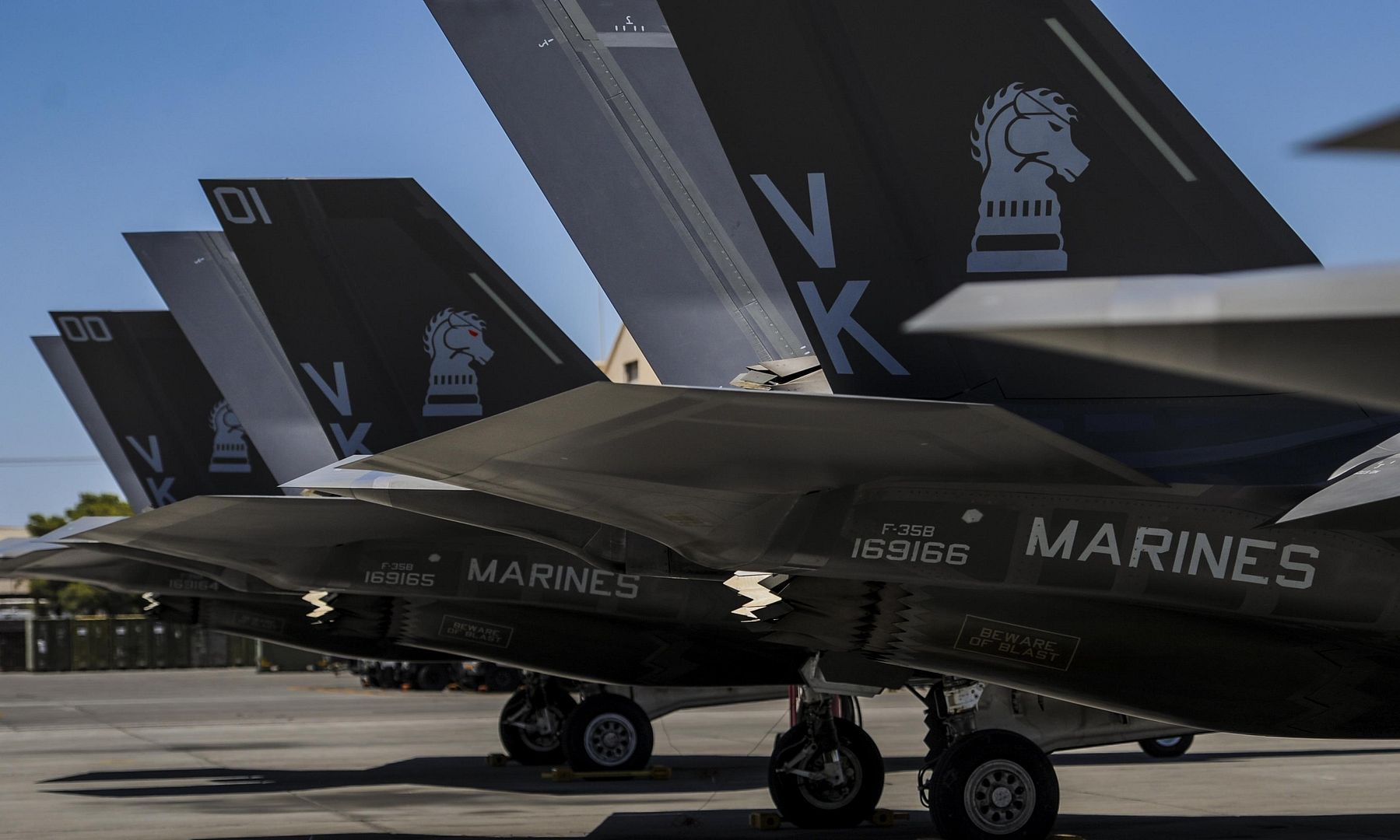
An F-35B, assigned to the 3rd Marine Aircraft Wing, Marine Corps Air Station Yuma, Az., prepares to take off during Red Flag 16-3 at Nellis Air Force Base, Nev., July 12, 2016. Air-to-air combat training exercise is conducted over the 2.9 million acre Nevada Test and Training Range during Red Flag. (U.S. Air Force photo by airman 1st Class Kevin Tanenbaum)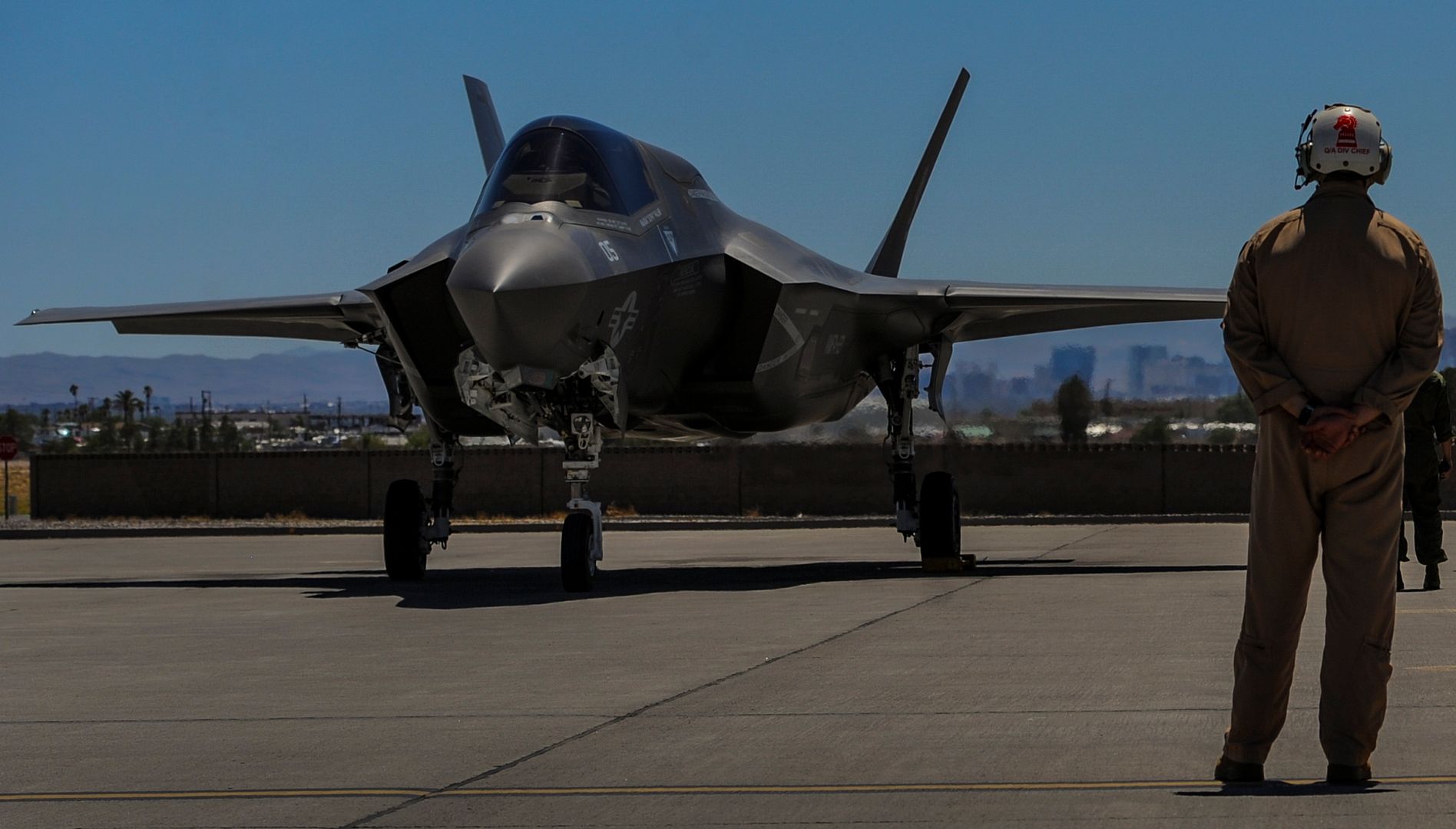
National Defence / Canadian Armed Forces
On June 17, 2016, residents of Moose Jaw, Saskatchewan, and 15 Wing in particular, were treated to a sight not seen in the skies over Moose Jaw since the mid-1960s ? a yellow-painted Harvard!
Flown on its maiden voyage by 2 Canadian Flying Training School (2 CFFTS) commandant Lieutenant-Colonel David Smith, the commemorative CT-156 Harvard II 156120 touched down in Moose Jaw after a short acceptance test flight and ferry flight from a paint facility in Prince Albert, Saskatchewan.
?It was a privilege to receive the commemorative British Commonwealth Air Training Plan [BCATP] Harvard II and return it home to the skies above Moose Jaw. I am extremely proud of the efforts of all members of our team, within both 2 CFFTS and our industry partner, CAE,? Lieutenant-Colonel Smith said. ?The monumental focus of effort symbolized by Canada?s contribution of the BCATP to the Second World War continues today, albeit on a much smaller scale, with the NATO Flying Training in Canada [NFTC] program, and reminds us of what we can accomplish when we all work toward a common goal.?
Through the diligent efforts of many and in cooperation with NFTC program partner CAE, the aircraft has been painted in a yellow Second World War BCATP paint scheme to commemorate the BCATP. The aircraft is painted to resemble an aircraft flown by Pilot Officer John Gillespie Magee, Jr., the famed author of ?High Flight?. Pilot Officer Magee completed his wings training on BCATP Harvards in June 1941 as a student at No. 2 Service Flying Training School, RCAF Station Uplands (Ottawa). ?High Flight? is now considered to be the poem of the Royal Canadian Air Force, and is commonly read during Battle of Britain commemorations and graduation ceremonies.
Vice President and General Manager of CAE Canada Mike Greenley has expressed his strong support of the project. "CAE is delighted to have had the opportunity to collaborate with the RCAF and 2 Canadian Forces Flying Training School on the BCATP commemorative CT-156 Harvard II paint scheme,? he said. ?The proud history of military flying training in Canada, and specifically Saskatchewan, is certainly worth celebrating. CAE looks forward to telling the BCATP story alongside our DND partners during this important commemorative year. A big thanks to Plane Perfection in Prince Albert, Saskatchewan, who painted the aircraft; we are ecstatic with how everything turned out."
The commemorative CT-156 Harvard II is more than an impressive looking aircraft; it has also returned to its flying rotation within the training program. This means that current student pilots will once again have the honour of flying a yellow Harvard during their training, just like the pilots that came before them 75 years ago.
Second Lieutenant Greg Warr was the lucky student pilot who flew the first flight in the yellow Harvard after its return to the flying training rotation, along with his instructor pilot, Major Marc-Andr? Asselin. Although he initially had to get used to the new colour, Second Lieutenant Warr said it was business as usual.
?Flying the yellow Harvard was no different than flying one with a normal paint scheme but it does make you think about the history that has brought the school to where it is today,? he said. ?The fact that 75 years ago there was a student pilot doing the exact same thing I?m doing today with the same coloured Harvard is pretty incredible, and I?m proud to be a part of that legacy.?
This year, the RCAF is commemorating the British Commonwealth Air Training Plan, one of the largest air training programs the world has ever seen, and marking the 75th anniversary of the establishment of the 400-series squadrons, which continue to serve Canada and Canadians today.
2 CFFTS, as the principal host unit of the NFTC Program, currently operates the CT-156 Harvard II in both the primary and advanced fast-jet training role as part of 15 Wing Moose Jaw. Graduates of the Harvard II basic training program are assigned to fast-jet, helicopter, or multi-engine advanced training with advanced fast-jet candidates remaining in Moose Jaw before progressing on the CT-155 Hawk and, eventually, the CF-188 Hornet.
-
8 years ago
 Level 1Boeing forecasts India needs 1,850 new aeroplanes over next 20 years
Level 1Boeing forecasts India needs 1,850 new aeroplanes over next 20 years
Boeing has predicted that India will need 1,850 new aeroplanes over the next two decades, costing an estimated $265bn. The estimate was released by the aeroplane maker at its annual Current Market Outlook (CMO) for India event in Mumbai. Boeing Commercial Airplanes senior vice-president for Asia Pacific and India Sales Dinesh Keskar said: ?India continues to have a strong commercial aerospace market and the highest domestic traffic growth in the world.
?With the new aviation policies in place, we see even greater opportunities and remain confident in the market and the airlines in India.? he CMO forecast that single-aisle aeroplanes such as the Next-Generation 737 and 737 MAX will continue to have the the largest share in new deliveries, with airlines in the country requiring around 1,560 aircraft. The single-aisle aeroplanes will continue to support the growth of low-cost carriers and will replace older, less-efficient aircraft.
Keskar added: ?Boeing?s strong orders and deliveries for the Next-Generation 737 and 737 MAX underscore how we are meeting our customers? demands and expectations, offering them the most fuel efficient, reliable and capable airplanes. ?We also continue to be the preferred choice for widebody airplanes in India, with more than 85% of the market share.? Among the other highlights in the CMO include that traffic growth in the country remains the highest in the world at 8.6%, domestic passenger traffic increased 21% from 2015 and low-cost carrier airlines represent more than 60% of all flights.
Post a reply
- Go to Previous topic
- Go to Next topic
- Go to Welcome
- Go to Introduce Yourself
- Go to General Discussion
- Go to Screenshots, Images and Videos
- Go to Off topic
- Go to Works in Progress
- Go to Skinning Tips / Tutorials
- Go to Skin Requests
- Go to IJAAF Library
- Go to Luftwaffe Library
- Go to RAF Library
- Go to USAAF / USN Library
- Go to Misc Library
- Go to The Ops Room
- Go to Made in Germany
- Go to Campaigns and Missions
- Go to Works in Progress
- Go to Juri's Air-Raid Shelter
- Go to Campaigns and Missions
- Go to Works in Progress
- Go to Skinpacks
- Go to External Projects Discussion
- Go to Books & Resources
